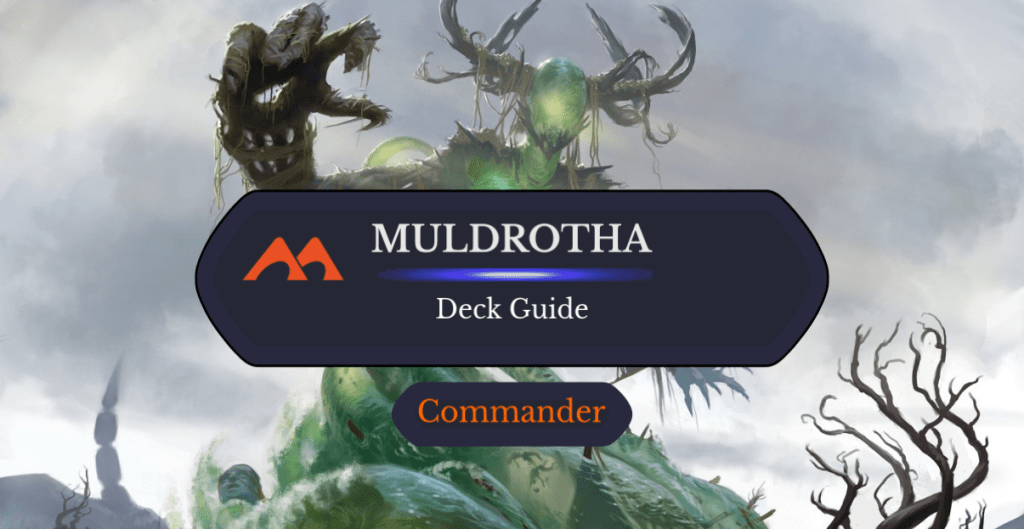
Muldrotha, the Gravetide | Illustration by Jason Rainville
Magic is a game of resources. The cards in your hand, your life total, and the amount of mana at your disposal are all integral to winning the game. Drawing cards and making land drops are among the strongest game actions because they give you a constant stream of resources.
One of the most potent resources in the game is your graveyard. Not every deck utilizes it, but when they do, they’re often busted—think of Dredge and Hogaak at their strongest. Today’s Commander deck tech fully embraces the graveyard’s utility and power under the supervision of one of the best Sultai commanders: Muldrotha, the Gravetide!
The Deck
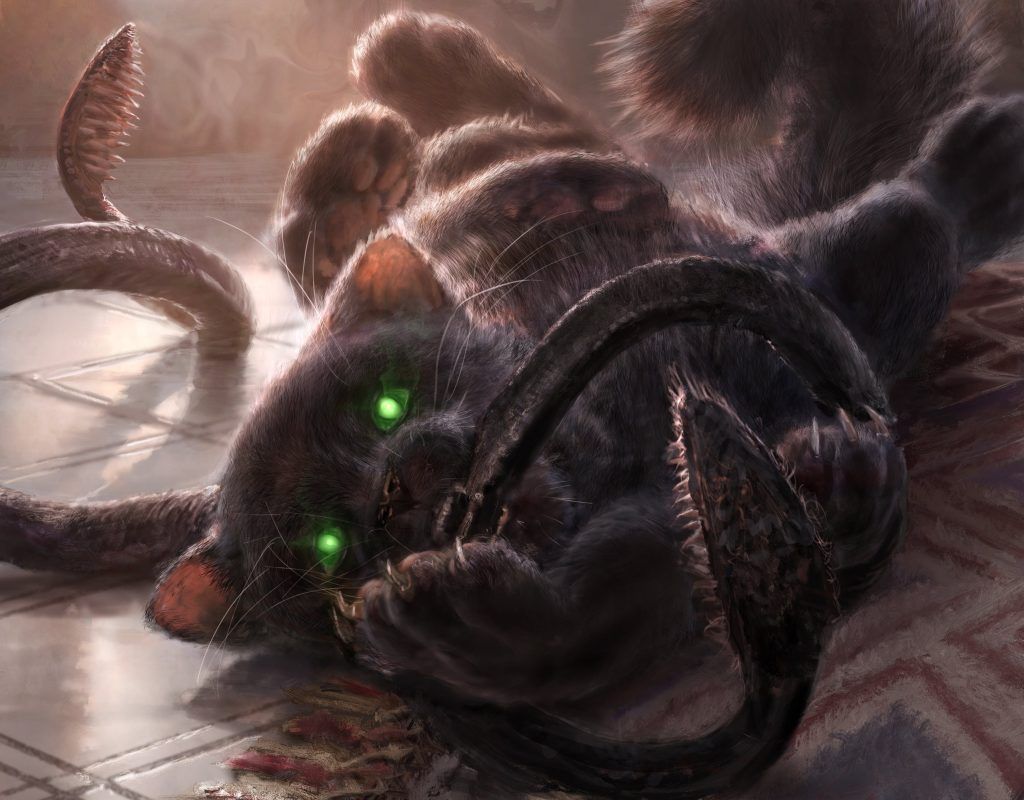
Displacer Kitten | Illustration by Campbell White
Commander (1)
Planeswalkers (2)
Grist, the Hunger Tide
Tamiyo, Collector of Tales
Creatures (31)
Walking Ballista
Birds of Paradise
Delighted Halfling
Elves of Deep Shadow
Haywire Mite
Stitcher's Supplier
Dark Confidant
Dauthi Voidwalker
Devoted Druid
Hermit Druid
Malevolent Hermit
Orcish Bowmasters
Sakura-Tribe Elder
Satyr Wayfinder
Skull Prophet
Thrasios, Triton Hero
Eternal Witness
Plaguecrafter
Blossoming Tortoise
Dimir House Guard
Displacer Kitten
Foundation Breaker
Mirrorhall Mimic
Ravenous Chupacabra
Subtlety
Timeless Witness
Shriekmaw
Sidisi, Undead Vizier
Underrealm Lich
Kogla, the Titan Ape
Colossal Skyturtle
Instants (10)
Entomb
Swan Song
Vampiric Tutor
Counterspell
Cyclonic Rift
Grisly Salvage
Mana Drain
Entish Restoration
Fierce Guardianship
Snuff Out
Sorceries (12)
Demonic Tutor
Finale of Devastation
Life from the Loam
Nature's Lore
Night's Whisper
Unmarked Grave
Winding Way
Agadeem's Awakening
Toxic Deluge
Temporal Manipulation
Sea Gate Restoration
Turntimber Symbiosis
Enchantments (4)
Mystic Remora
Seal of Removal
Animate Dead
Court of Cunning
Artifacts (6)
Lion's Eye Diamond
Lotus Petal
Mishra's Bauble
Executioner's Capsule
Mesmeric Orb
Machine God's Effigy
Lands (34)
Bayou
Boseiju, Who Endures
Breeding Pool
Cephalid Coliseum
City of Brass
Command Beacon
Command Tower
Fabled Passage
Forest x3
Island x2
Lotus Field
Mana Confluence
Misty Rainforest
Morphic Pool
Otawara, Soaring City
Overgrown Tomb
Polluted Delta
Prismatic Vista
Rejuvenating Springs
Swamp x3
Takenuma, Abandoned Mire
Tolaria West
Tropical Island
Underground Sea
Undergrowth Stadium
Urborg, Tomb of Yawgmoth
Verdant Catacombs
Watery Grave
Zagoth Triome
This is a Sultai combo deck leaning on the graveyard and its commander as its primary means of comboing off. It’s high-powered thanks to the focus on combos—while it can win a fair game, that’s plan C. It tussles pretty well with high-powered and some of the stronger mid-powered decks, but it lacks the speed and interaction to contend with cEDH decks.
The general goal is to dump as much of your deck into the graveyard as possible and leverage it to win. Your commander gives the deck a healthy amount of card advantage, but the 99 still has plenty of other sources of card draw, plus tutors, to set up your combos.
As a green deck, an abundance of acceleration is at your disposal, so you can play spells quite a bit faster than some of your opponents, and your interactive suite is no slouch either; there’s a dash of countermagic to protect your combos as well as many interactive pieces that work well with your commander.
Overall, this iteration of Muldrotha, the Gravetide looks to combo off out of a midrange shell, but it’s more than capable of grinding in long games thanks to the nature of its commander.
The Commander
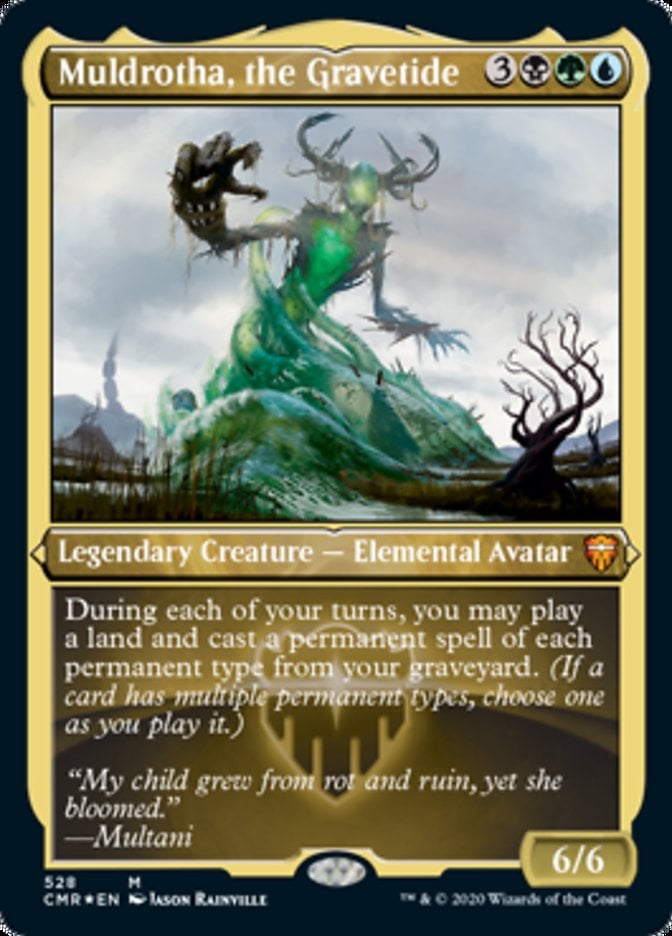
There’s a reason Muldrotha, the Gravetide, is the most built Sultai commander on EDHREC. It’s an incredible value engine that provides a robust suite of card advantage. Getting to cast permanents and play lands from your graveyard makes this a natural fit for any deck looking to dump cards in the graveyard.
This deck focuses on Muldrotha’s utility as a combo commander. In particular, you’re interested in manipulating a little rules quirk. A new instance of Muldrotha allows you to cast cards with the same type multiple times a turn. Flickering your commander counts as a new instance of the permanent, which the deck leverages via Displacer Kitten for many of your loops.
Beyond just being a combo piece, your commander helps set up combos. Through self-mill with cards like Court of Cunning, Hermit Druid, and Mesmeric Orb, you get to see way more cards than if you were just drawing naturally, most of which are at Muldrotha’s disposal. You can also use highly efficient tutors like Entomb and Unmarked Grave. Even when Muldrotha isn’t the combo piece, it does a marvelous job getting them together.
Lastly, all the grind in the deck comes from Muldrotha providing an oozy cornucopia of cards to recast. Even if you can’t combo off, you can constantly replay your interactive spells, much of your self-mill, and a handful of chonky creatures in a deluge that overwhelms opponents.
Self-Mill Cards
Next to the combo pieces, these are the most important cards in the deck. They fuel Muldrotha with cards to cast and let you rip through your deck.
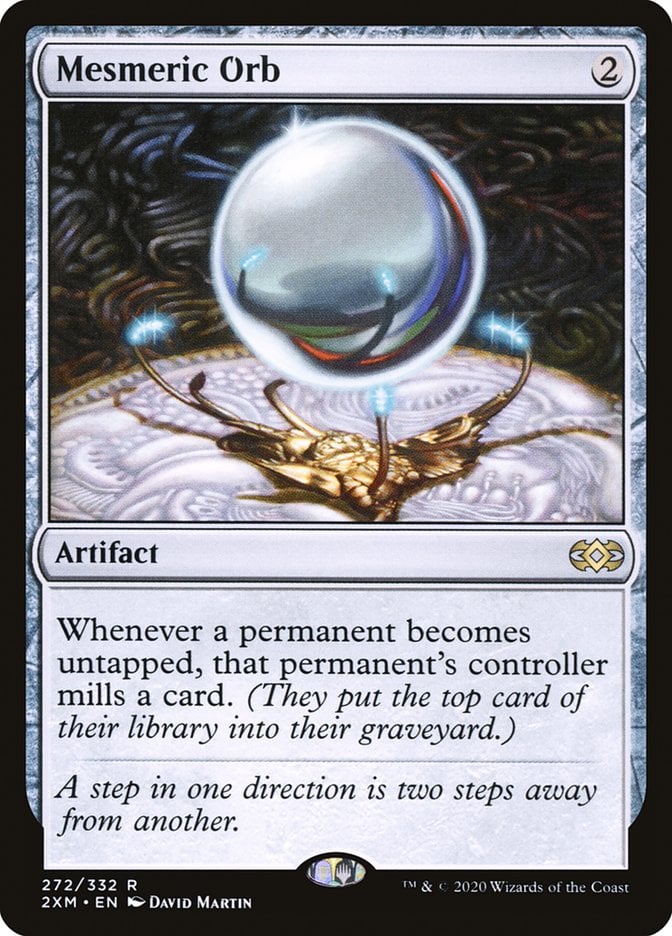
Mesmeric Orb is about as efficient as self-mill gets. There’s always the risk of enabling other graveyard-based decks, but cowardice is no reason to pass up on a card that routinely mills 10 or more cards for a mere 2 mana.

This deck is playing Hermit Druid fairly, in the sense that you have basic lands, and one activation won’t mill your deck. There’s a solid argument that no number of basics makes this fair, as it mills huge chunks of cards for a single mana.
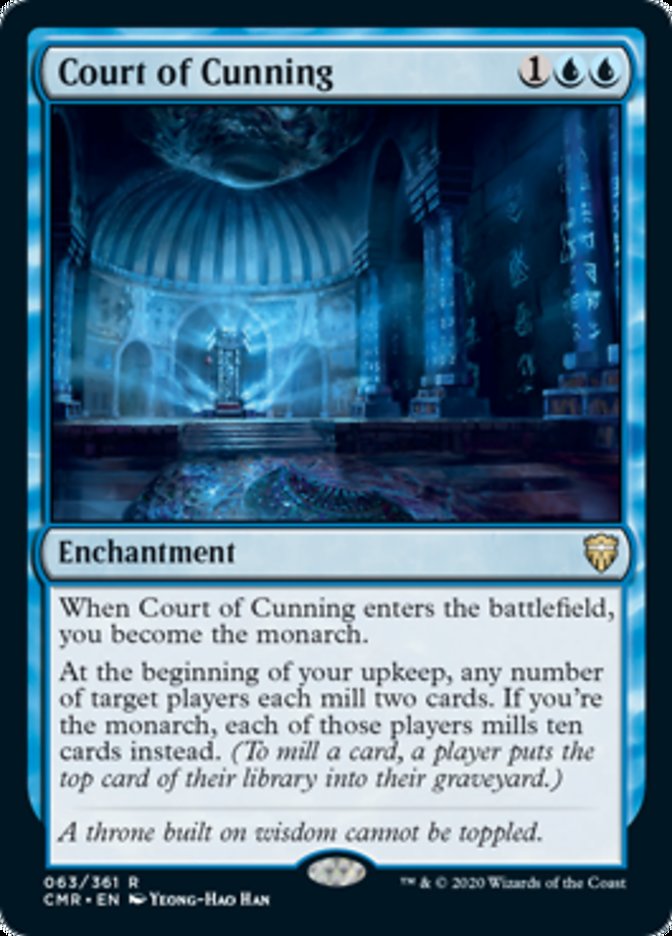
Court of Cunning pulls double duty in this deck. You can easily defend the monarch with cheap creatures, allowing you to get a steady stream of cards into your hand and graveyard for a double-pronged approach to card advantage.
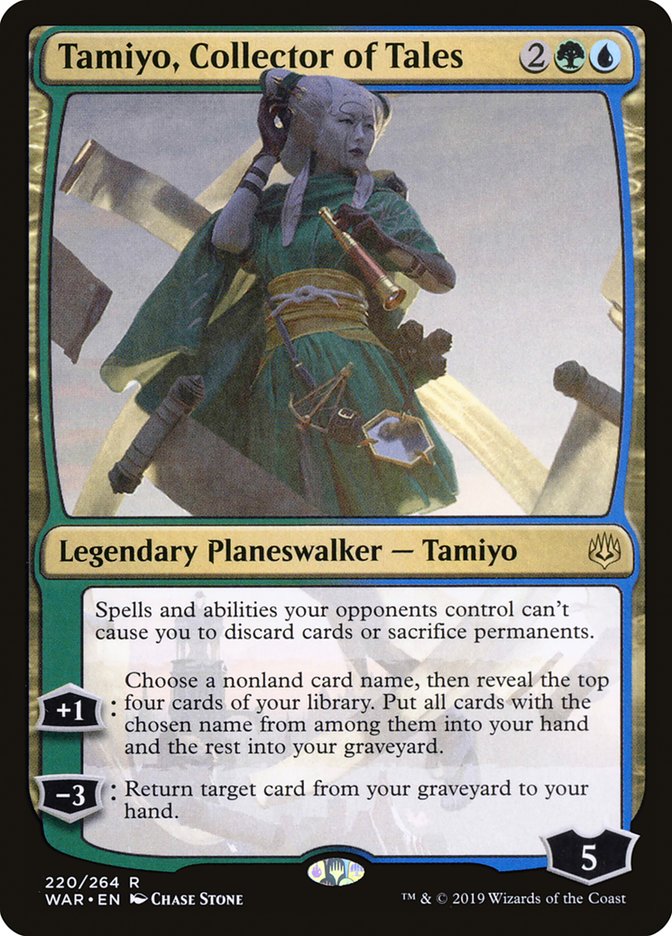
Tamiyo, Collector of Tales is the complete package. Card advantage, self-mill, a mini-tutor, and a combo piece rolled into an efficient planeswalker with additional upside.
Satyr Wayfinder, Grisly Salvage, and Winding Way all serve a similar purpose: filling your graveyard while ensuring you get to keep hitting land drops. This deck is plenty mana-hungry, so hitting those lands is important!
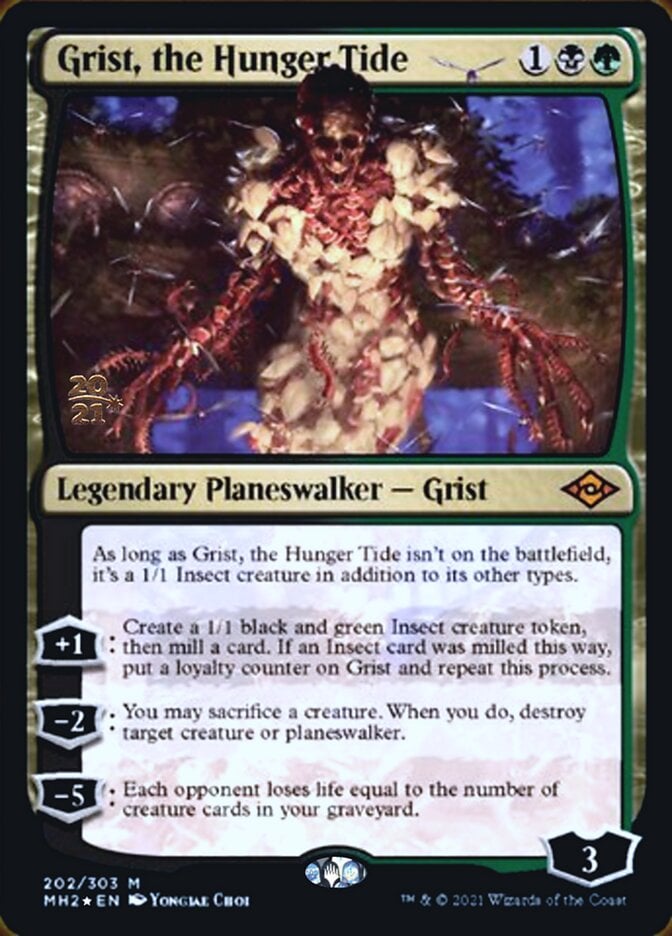
The self-mill from Grist, the Hunger Tide is incidental, but this planeswalker pulls a lot of weight as an interactive piece that comes back again and again.

Underrealm Lich is on the pricier side but so effective. Getting the best card of three while storing the other two in the graveyard is a wonderful source of card advantage; as a replacement effect, it also ensures you don’t need to worry about decking.

Stitcher's Supplier is just efficient. Six cards for is a great rate. You have a couple of ways to sacrifice the Supplier, but it’s easy enough to chump with it to get the death trigger.

Life from the Loam provides plenty of value. Just having the dredge card is useful, as are the land drops, but the channel lands from the Kamigawa: Neon Dynasty set allow this to do a reasonable Divination impression.
Card Advantage
While all the self-mill fuels the card advantage engine that is Muldrotha, the Gravetide, sources of card draw that don’t involve your commander are invaluable. You need them if Muldrotha is trapped behind Drannith Magistrate or if Rest in Peace ruins your day. You have a combination of burst card draw and steady card advantage.
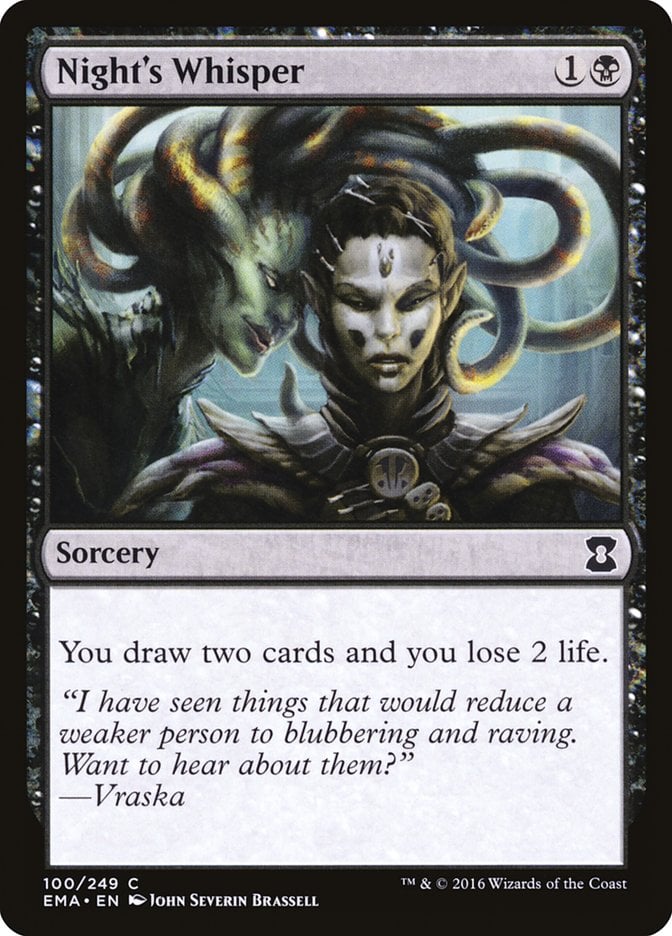
As one of the best card-draw effects in black, Night's Whisper is one of the few cards I consider a requirement for every black deck. It’s just too efficient at what it does.
Mishra's Bauble is in this deck because it works well with your commander. It cuts your deck to 98 cards and has some utility with Displacer Kitten.

Thrasios, Triton Hero can be an outlet for excess mana should you have any, but its primary role is an infinite mana outlet that allows you to draw your deck.

Colossal Skyturtle does a bit of everything. Its channel abilities give it duality as interaction or a cantrip, which are practically uncounterable as activated abilities; it’s also just a large creature to cast after discarding.
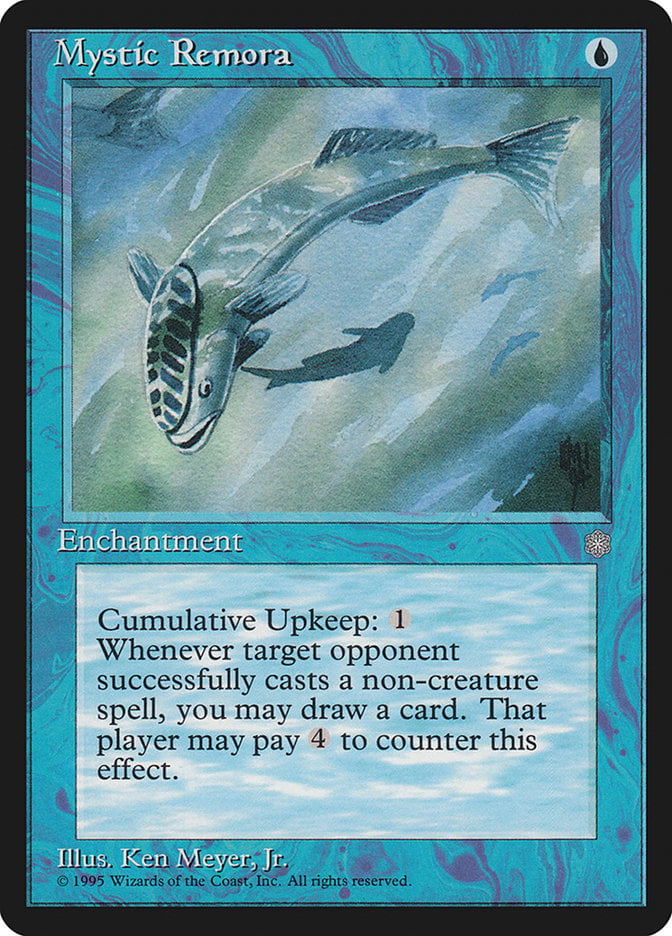
Mystic Remora is among the most powerful card advantage engines in Commander. While powerful alone, your commander makes it better; instead of the cumulative upkeep adding up, you just sacrifice it and pay each turn.
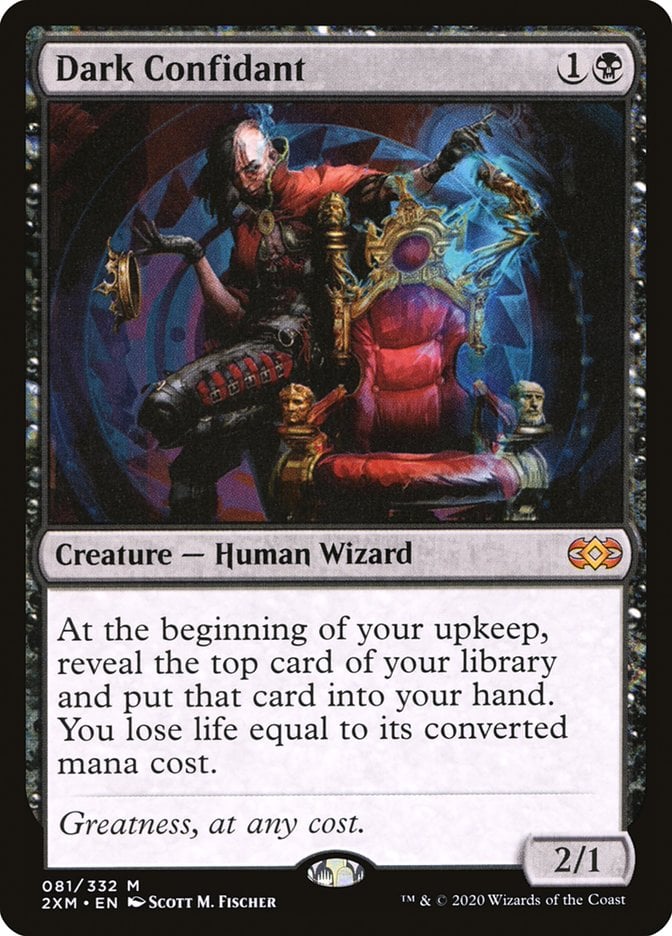
Dark Confidant is a powerful card advantage engine. You have a couple of expensive spells, but overall, the deck is cheap, and the extra cards go a long way to ending the game before the life loss matters.
Tutors
As a combo deck, you care about seeing lots of cards; while your card advantage and self-mill are great at showing you large numbers of random cards, getting the ones you need when you need them also matters, so there’s a handful of tutors to facilitate that.
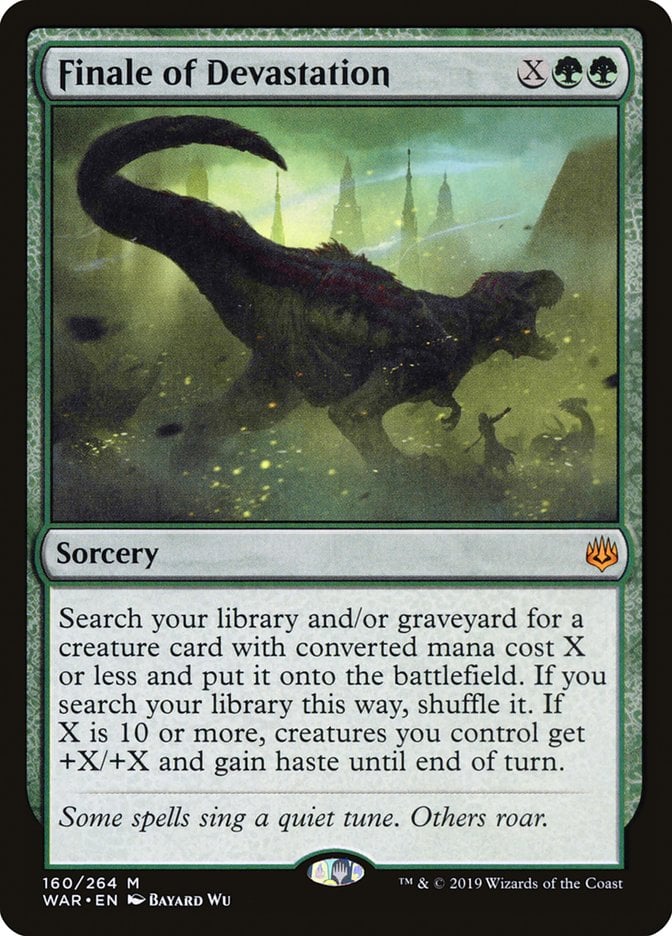
All your combos utilize at least one creature, so Finale of Devastation is a natural include. It’s also a key piece towards winning the game with infinite mana. The best route often involves casting all your creatures, then Finale for a massive number.
Entomb and Unmarked Grave work amazingly with your commander since you can just cast the card right away. They also work with Animate Dead to reanimate those important creatures.
Vampiric Tutor and Demonic Tutor are just the best at what they do with little argument. They’re natural includes in any black combo deck.
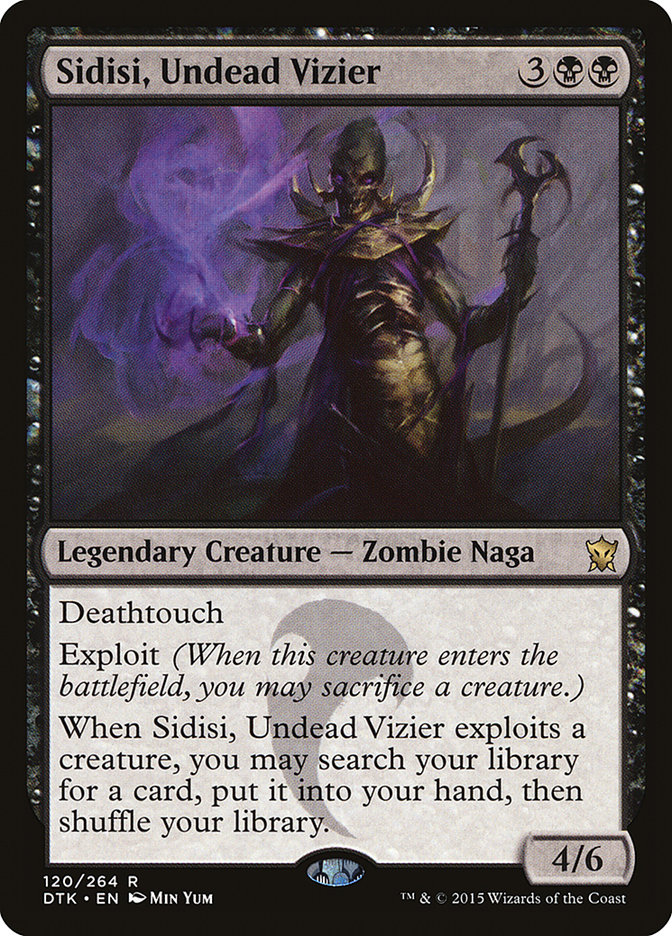
Sidisi, Undead Vizier provides a stream of tutors by exploiting itself. It sets stuff up and functions as an infinite mana outlet to cast your deck.
Dimir House Guard is a fantastic tutor. Transmute on a 4-drop allows you to find many of your most important cards, including Tamiyo, Collector of Tales, Displacer Kitten, and Timeless Witness, without being countered. This card is also valuable as a sacrifice outlet. This deck generates long-term card advantage by sending creatures with valuable ETBs like Ravenous Chupacabra or Eternal Witness to the graveyard so Muldrotha can recast them.
Interaction
This deck is no slouch when interacting with its opponents. While you have a few staples, plenty of options work well with your commander.
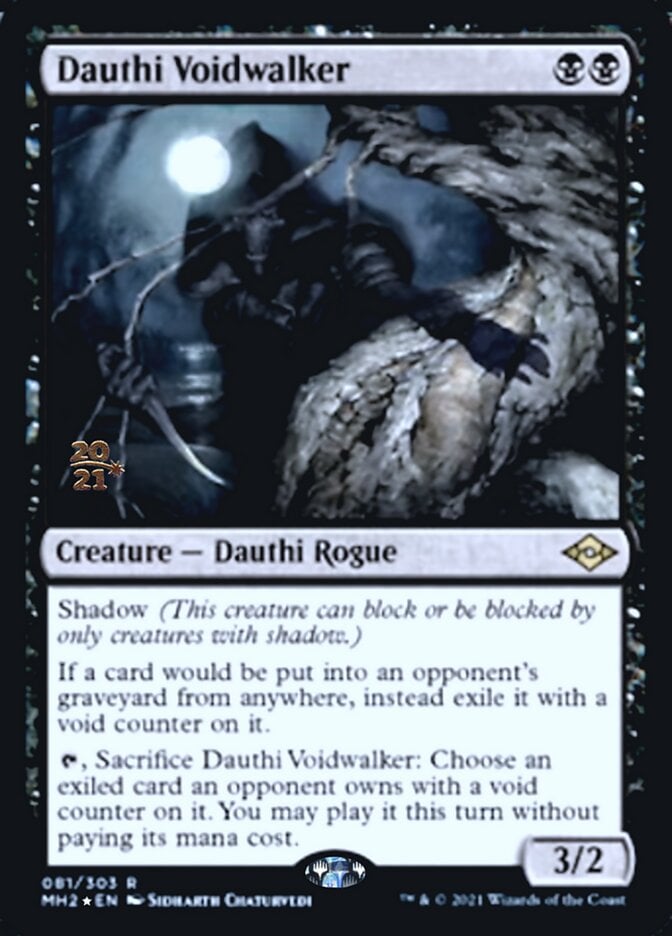
Tagging Dauthi Voidwalker solely as interaction sells the card short. This is a powerful disruptive piece that lets you cast a valuable spell later—and it gets even better when you get to keep casting the Voidwalker.
Foundation Breaker and Haywire Mite offer artifact and enchantment interaction that works well with your commander, so you can cast them over and over. Shriekmaw and Subtlety fulfill similar roles as creature interaction.
Seal of Removal and Executioner's Capsule become much better alongside your commander and allow you to do some spicy plays with Displacer Kitten.

Plaguecrafter falls a little flat against token strategies, but it’s a great way to handle the massive threats put forth by Timmy decks and is easy to power out to handle some early dorks.
Malevolent Hermit provides potent stack interaction that can protect your combos and get value when milled.
The Mana Base
The mana base has plenty of staples alongside fixing lands, but there’s plenty of value within it.
You have all three on-color channel lands from Neon Dynasty: Boseiju, Who Endures and Otawara, Soaring City provide valuable interaction, and Takenuma, Abandoned Mire provides self-mill and card advantage. These are especially important with Life from the Loam, but channeling them and then playing them with Muldrotha is plenty of value.
MDFC lands from Zendikar Rising keep the train rolling; Turntimber Symbiosis, Sea Gate Restoration, and Agadeem's Awakening increase the range of keepable hands with their presence, even if playing them untapped is a little painful.
Tolaria West is in the deck to tutor for exactly Lion's Eye Diamond, but finding Lotus Petal and Mishra's Bauble can be valuable in the right spot.
Lion's Eye Diamond is one of the strongest cards in the deck. It makes infinite mana, but the play pattern of using this to cast a turn 2 or 3 Muldrotha, then immediately replaying the Diamond and cracking it to cast one of the spells you discarded is among the deck’s most explosive play patterns. Lotus Petal also combos.
Blossoming Tortoise and Skull Prophet are multifunctional cards that produce mana and self-mill. Entish Restoration fulfills a similar role by ramping you while providing an additional land drop.
The Strategy
The goal is simple: combo off. Most of this deck focuses on producing mana and seeing additional cards to combo off as quickly and consistently as possible for its power level.
Avoid becoming the villain of the table with this deck, by which I mean never play the scariest card. This deck is well-suited to this; many of its cards seem innocuous until they’re slotted together to win. If you avoid slamming threats, your opponents are more concerned about other players jamming threats while you bide your time until certain victory. Few of the cards apart from Displacer Kitten leap out as game-enders, and some savvy politicking is often enough to protect other pieces.
You’re looking to win around turn 5 or 6. The deck can win as early as turn 3, but that requires lots of luck with your opening hand. Ramp and self-mill or another source of card advantage are among the most important things to start with; as for specific cards, almost any hand with Lion's Eye Diamond is keepable. It’s one of your best cards.
This deck heavily rewards knowing your lines. While there are a few crucial combo pieces, many of them work alongside a few different pieces of the deck, and the combos I’m outlining below honestly may not be all the combos in the deck; I discovered two or three of them as happy accidents in playtesting, and Displacer Kitten especially tends to work in surprising ways.
Combos and Interactions
Your combos result in infinite mana or an infinite chain of extra turns. Some use Muldrotha, others don’t. Eternal Witness and Timeless Witness are completely interchangeable, though none of the combos work with the eternalize token; for clarity’s sake, I’ve used E-Wit in the examples below.
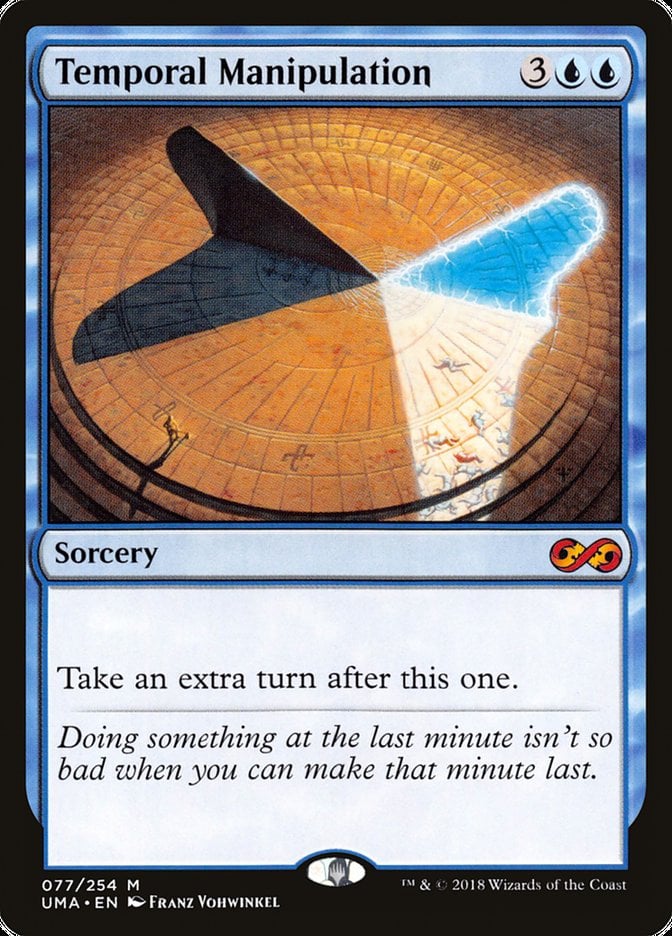
Similarly, whenever I mention needing a card in hand, it’s also acceptable to have it in your graveyard and castable with Muldrotha’s ability, except Temporal Manipulation.
For the infinite mana combos, you have a couple of outlets. Walking Ballista wins on its own. You can also use Thrasios, Triton Hero to draw your deck, then cast all your creatures and cast an infinitely large Finale of Devastation. There are also a few lines utilizing Displacer Kitten and infinite mana to mill your whole deck.
As for infinite turns, the win condition is taking turns until you can assemble one of the more decisive combos. You can also naturally play all your lands and creatures. Most tables scoop once you demonstrate infinite turns, but it’s important to explain your win. Let’s beginning with the infinite mana combos.
Muldrotha, the Gravetide + Displacer Kitten + Lion's Eye Diamond or Lotus Petal
This is the bread and butter of the deck. For it to work, you need Muldrotha and Kitten in play and the artifact in play or your hand; I’m assuming in play below.
Sacrifice your artifact to make mana, then cast it from your graveyard using Muldrotha’s ability. This triggers Displacer Kitten. Target Muldrotha with the trigger. The trigger resolves, flickering Muldrotha.
Sacrifice your artifact again. Since you flickered Muldrotha, this is a new instance of your commander, allowing you to cast the artifact again. You can continue this loop to generate infinite mana of all colors.
While you have some very neat infinite mana outlets, this setup enables many loops that win or dig to a win condition. All the following combos assume you've completed the above combo and have all three elements at your disposal.
Seal of Removal or Executioner's Capsule + Satyr Wayfinder, Stitcher's Supplier, or Blossoming Tortoise
For this combo, you need a card from each group in play or your hand. Note that Executioner's Capsule doesn’t work with Stitcher's Supplier. I’m using Satyr Wayfinder in the examples below.
Cast your Satyr Wayfinder and resolve the trigger. You can then bounce it with Seal of Removal or kill it with Executioner's Capsule.
Cast the Wayfinder from your hand or graveyard and the card you removed it with from your graveyard; casting the Seal or Capsule triggers Kitten, flickering Muldrotha, and resetting it so you can continue the loop until you’ve milled your entire library.
Dimir House Guard + Satyr Wayfinder, Stitcher's Supplier, or Blossoming Tortoise
For this loop, you need both creatures in play. Sacrifice the Satyr Wayfinder to Dimir House Guard, then cast your Wayfinder from the graveyard.
Next, cast your artifact to reset Muldrotha. Repeating this loop mills your entire deck. If you substitute Orcish Bowmasters for Wayfinder you’ll win the game.

With infinite mana and Sidisi, Undead Vizier, you can tutor for your entire deck. You need to cast Sidisi from your graveyard and sacrifice it to its exploit trigger, then cast Lotus Petal or Lion's Eye Diamond to reset Muldrotha, allowing you to cast Sidisi again.
Seal of Removal + Orcish Bowmasters
This wins once you have the infinite mana combo; it follows the same steps as the loop with Satyr Wayfinder, except you cast Orcish Bowmasters over and over to ping your opponents to death.
You also have some infinite mana combos that don’t involve both Muldrotha and Displacer Kitten.
Displacer Kitten + Lion's Eye Diamond or Lotus Petal + Tamiyo, Collector of Tales
With this loop, you need Kitten and Tamiyo in play and the artifact in hand. Begin by activating Tamiyo once; this can be to return the mana artifact from your graveyard to your hand, or an uptick.
Cast your mana artifact, triggering the Kitten. Target Tamiyo with the trigger, resetting it.
Sacrifice the mana artifact, then use Tamiyo’s -3 ability to return it to your hand, then cast it to reset Tamiyo.
This loop effectively substitutes Tamiyo for Muldrotha, with the same result being infinite mana. Since Tamiyo only returns one card, it can’t replicate most of the combos above, but the loops that involve Seal of Removal bouncing a creature work since the only card you need to return from your graveyard to your hand is the Seal itself.
Devoted Druid + Machine God's Effigy
This is a much less complicated method for infinite mana that uses neither the graveyard nor your commander, making it effective if you lose access to one of the two resources.
You need Devoted Druid in play and Machine God's Effigy in hand.
Cast the Effigy and have it come into play as a copy of Devoted Druid, except as an artifact. Tap it for or , then use the Druid’s ability to untap itself with a -1/-1 counter.
Since the Effigy is a noncreature artifact, it has no toughness, so you can continue this loop to generate infinite and mana.
That rounds out the infinite mana combos. The deck's infinite turn combos primarily utilize Eternal Witness, though Displacer Kitten does some work.
Displacer Kitten + Tamiyo, Collector of Tales + Temporal Manipulation
This combo uses the same procedure as the one above with Tamiyo and Displacer Kitten but doesn’t require infinite mana. You’ll just cast Temporal Manipulation each turn and pass to your next turn until you dig yourself into another combo.
Eternal Witness + Kogla, the Titan Ape + Temporal Manipulation
For this combo, you need Kogla in play and the other cards in your hand.
Cast Temporal Manipulation to get an extra turn. Then cast Eternal Witness to return Temporal Manipulation to your hand with its ETB.
Finally, activate Kogla’s ability to return E-Wit to your hand. Rinse and repeat each turn. This requires a lot of mana, but it’s effective.
Muldrotha, the Gravetide + Eternal Witness + Dimir House Guard + Temporal Manipulation
This combo requires Muldrotha and House Guard in play, Manipulation, and E-Wit in hand.
Cast Temporal Manipulation, getting an extra turn. Then cast Eternal Witness and use its ETB to return Manipulation to your hand. Pass to your extra turn.
In this turn, sacrifice the Witness to Dimir House Guard, then cast it from your graveyard with Muldrotha. Again, return Temporal Manipulation from your graveyard to your hand and cast it, then repeat everything next turn.
This arrangement can also work with Grist, the Hunger Tide, though it only enables numerous extra turns, not infinite. Grist, Kitten, Witness, and Manipulation allow you to perform a similar loop to take lots of, though not infinite turns with a procedure like the Tamiyo-Kitten combos.
Ghastly Mimicry + Eternal Witness + Temporal Manipulation
Ghastly Mimicry is the backside of Mirrorhall Mimic. For this combo, you need Mimic in your graveyard, E-Wit in play, and Manipulation in hand.
Enchant the E-Wit with Ghastly Mimicry, then cast Temporal Manipulation. Go to your extra turn.
Ghastly Mimicry makes a token copy of E-Wit; use the ETB ability to return Manipulation to your hand, rinse, and repeat. This doesn’t need to happen in the same turn; you can assemble it whenever you have an E-Wit enchanted with Mimicry. Entomb is especially useful to set this one up.
Rule 0 Violations Check
Apart from the infinite combos, this deck hits above the belt. This certainly isn’t something to take to casual tables, but it can play well against a range of decks from mid- to high-power so long as the table doesn’t mind combos closing out the game.
Budget Options
The mana base is the easiest place to make cuts. Dual lands, shock lands, and fetch lands are responsible for most of the deck’s price, but a variety of duals make acceptable substitutes. If you cut the fetch lands, it’s worthwhile to keep some number of Evolving Wilds around for Muldrotha value.
Lion's Eye Diamond has no substitute. You can cut the Diamond since Lotus Petal fulfills the role of a combo piece, but the only real budget option is to proxy it.
You can swap Mana Drain with any cheap counter like Delay or An Offer You Can't Refuse.
Walk the Aeons works instead of Temporal Manipulation; mind that your combos with it become a little more expensive.
Every person in every format plays Orcish Bowmasters. Some useful subs include Notion Thief or Narset, Parter of Veils if you want to punish card draw, or more interaction for cheap creatures.
Vampiric Tutor and Demonic Tutor have plenty of reasonable subs, like Wishclaw Talisman or Scheming Symmetry.
Other Builds
Muldrotha, the Gravetide offers flexibility in play patterns and power level. An easy way to power this list down is to remove all the combo pieces in favor of more grindy elements, like Mulldrifter and Wrenn and Seven.
You could also lean into synergy with an aristocrat deck. Focus on sacrificing creatures with solid ETBs like Virus Beetle and Dusk Legion Zealot to cards like Braids, Arisen Nightmare, or Priest of Forgotten Gods, then cast them again for oodles of value!
Commanding Conclusion
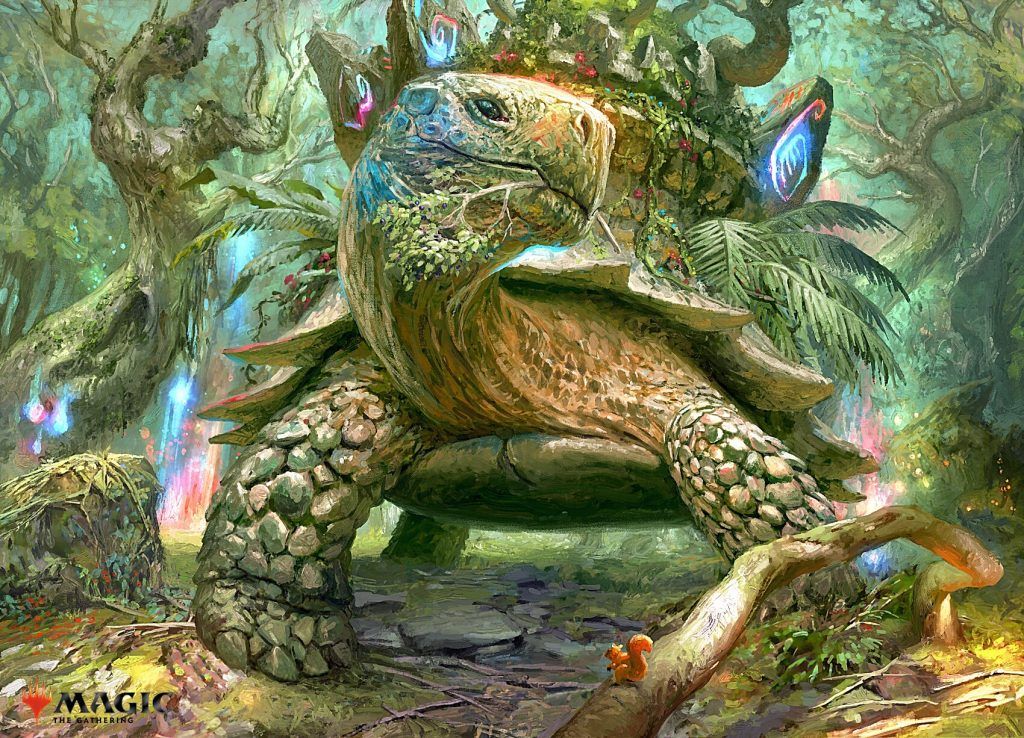
Blossoming Tortoise | Illustration by Simon Dominic
Magic is a game of many resources to manage. One of the greatest and most powerful is the graveyard. Led by Muldrotha, the Gravetide, this midrange-combo deck demonstrates the horrific power one can achieve by looking to the other shore and getting their hands dirty.
What’s your favorite graveyard-based commander? Do you like combos in EDH, or do you prefer fairer decks? Let me know in the comments or on the Draftsim Discord!
Stay safe, and thanks for reading!
Follow Draftsim for awesome articles and set updates: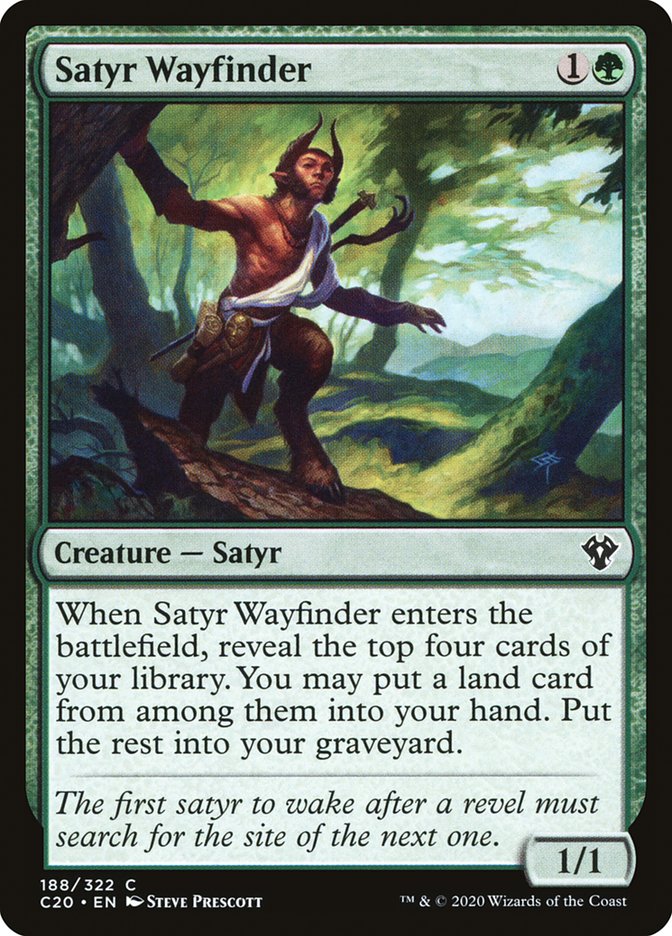
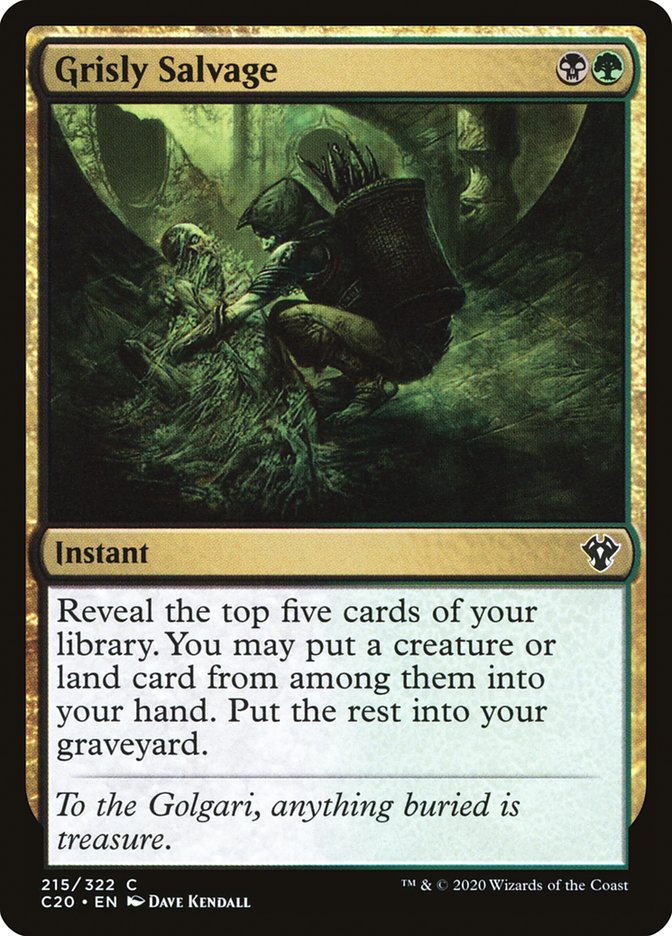
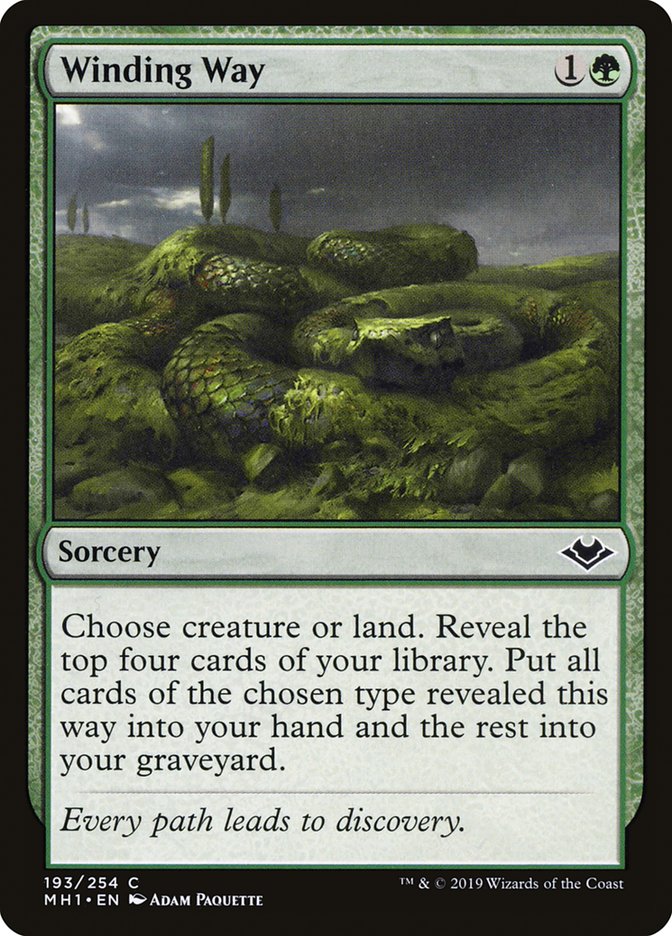
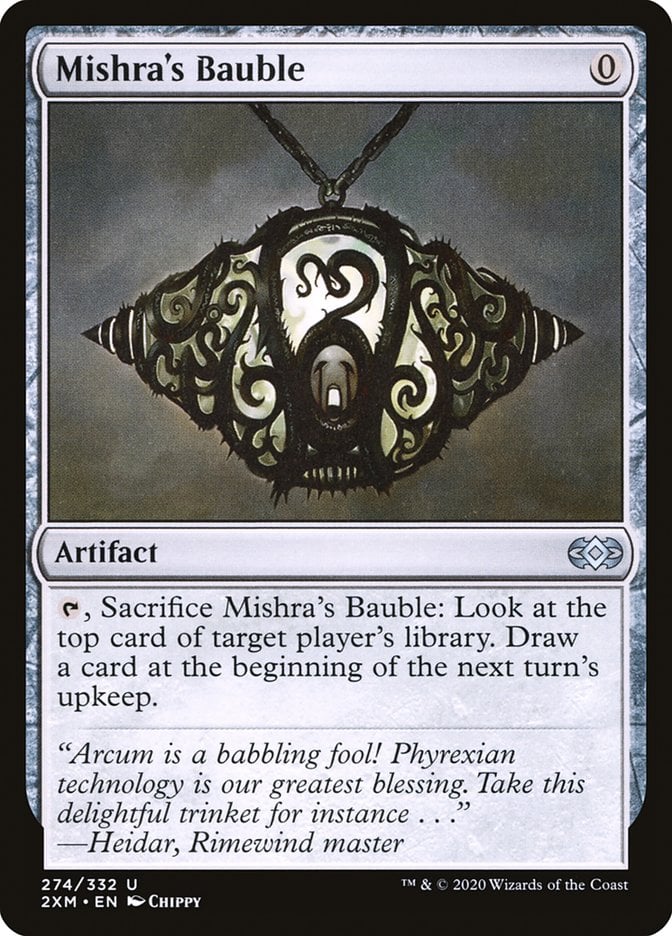

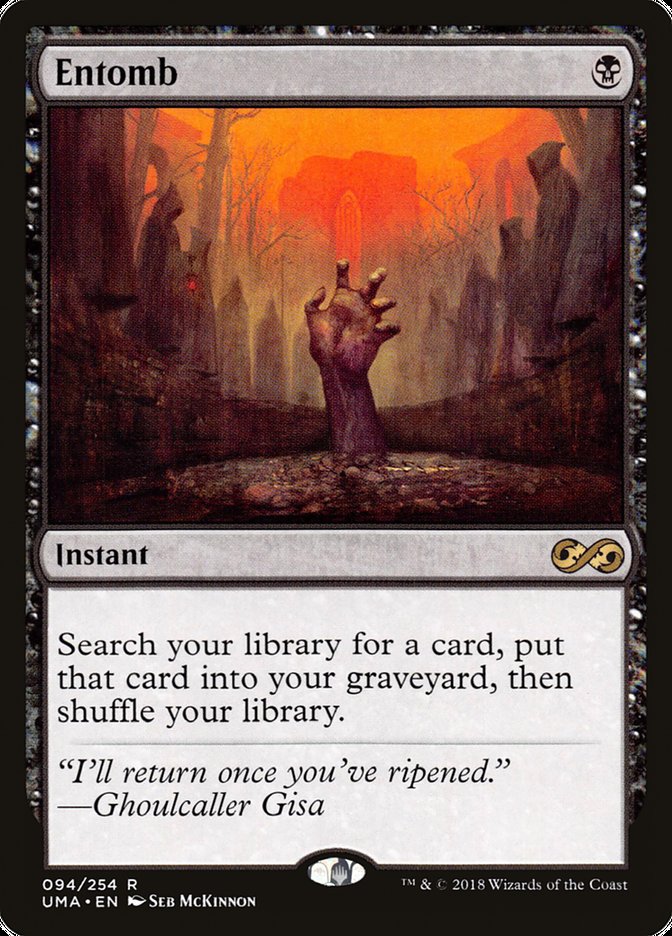
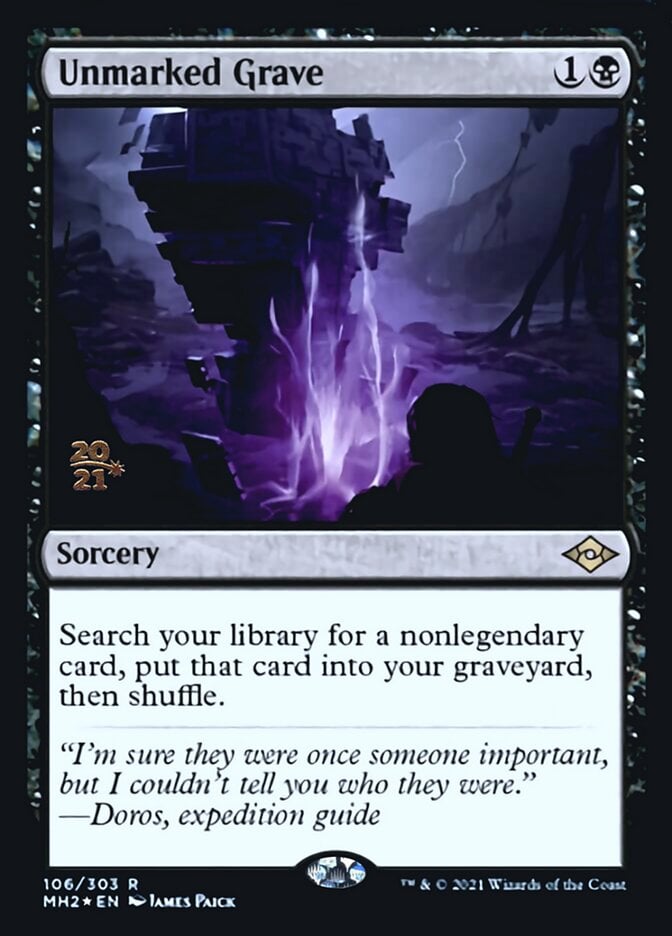
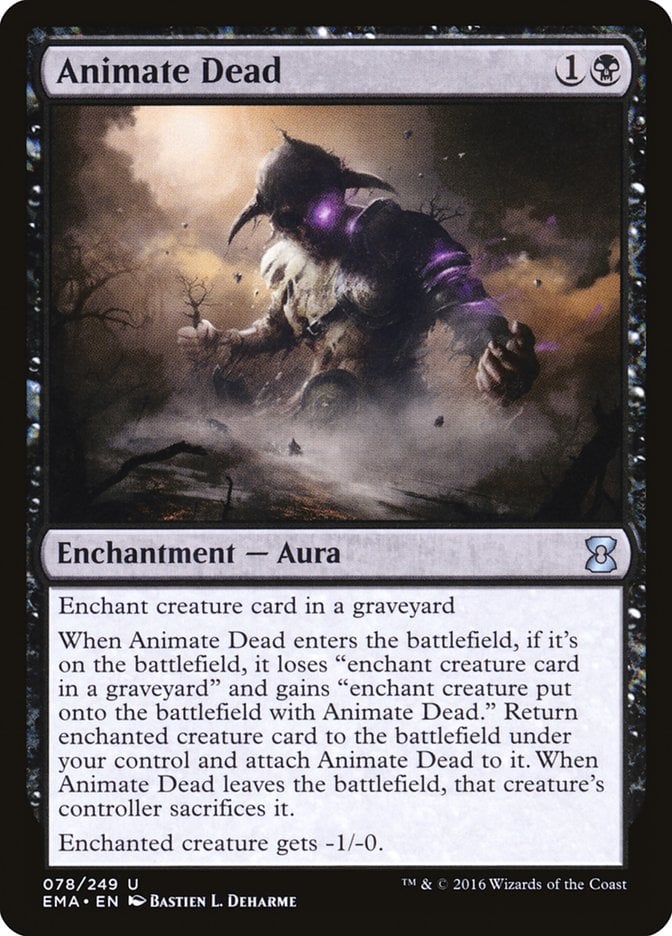
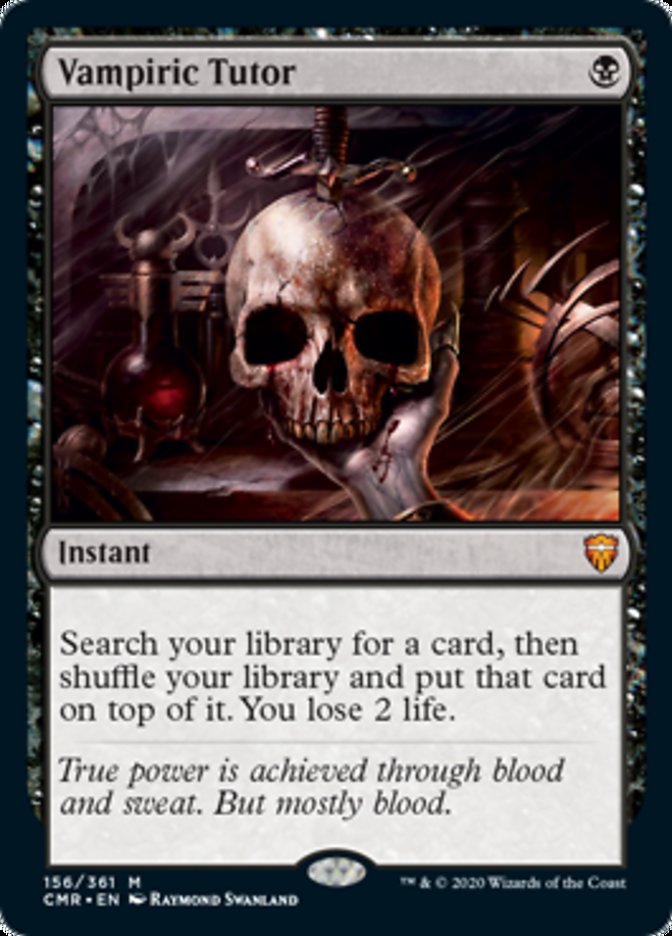

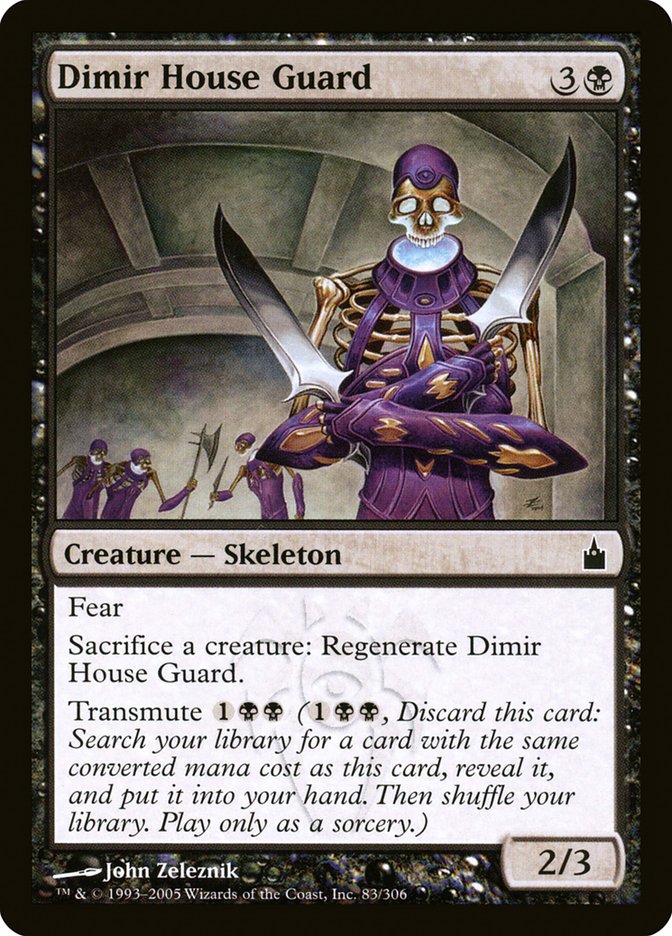
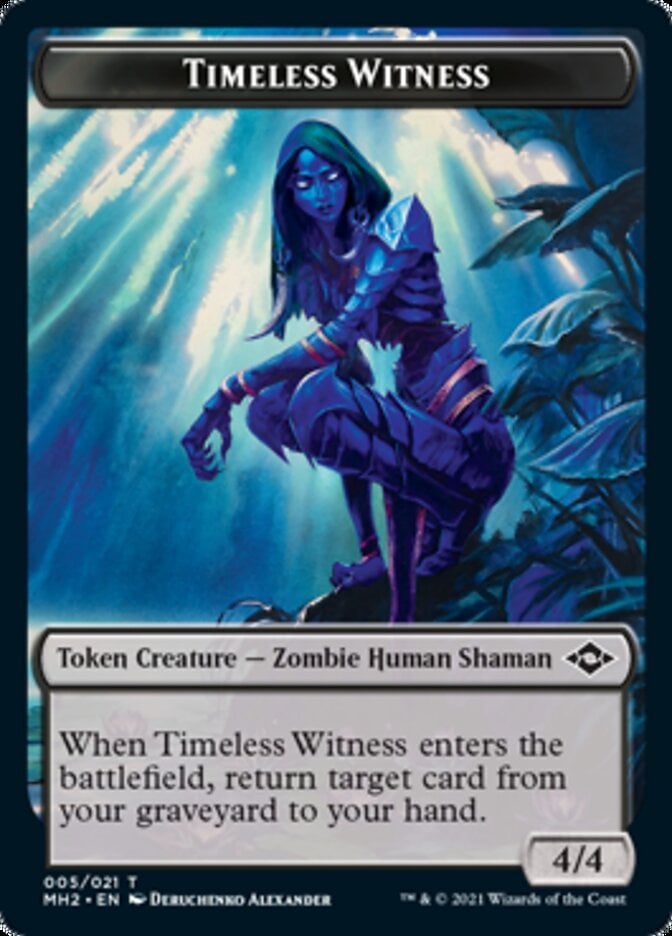
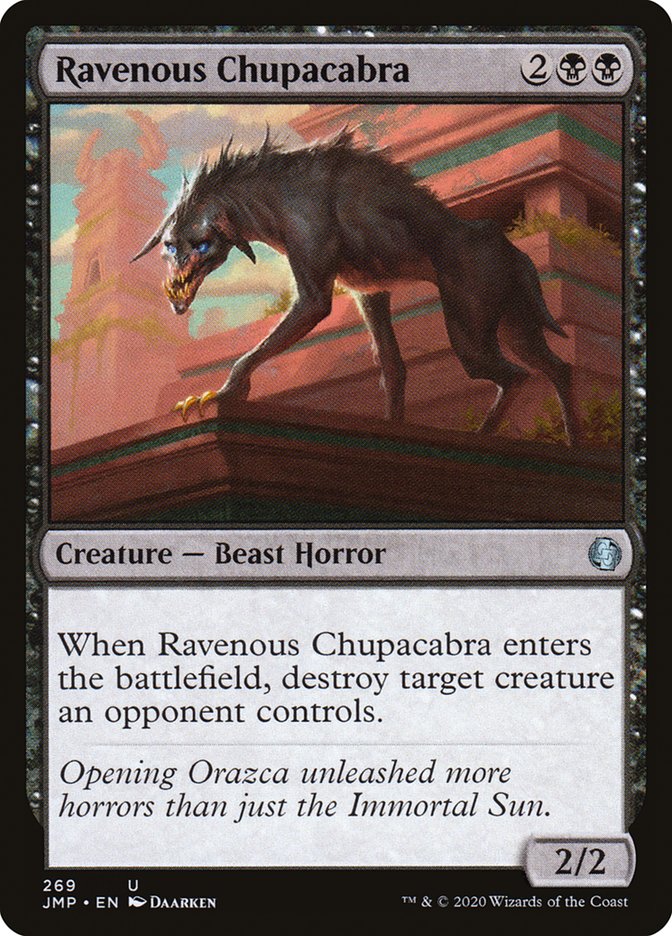
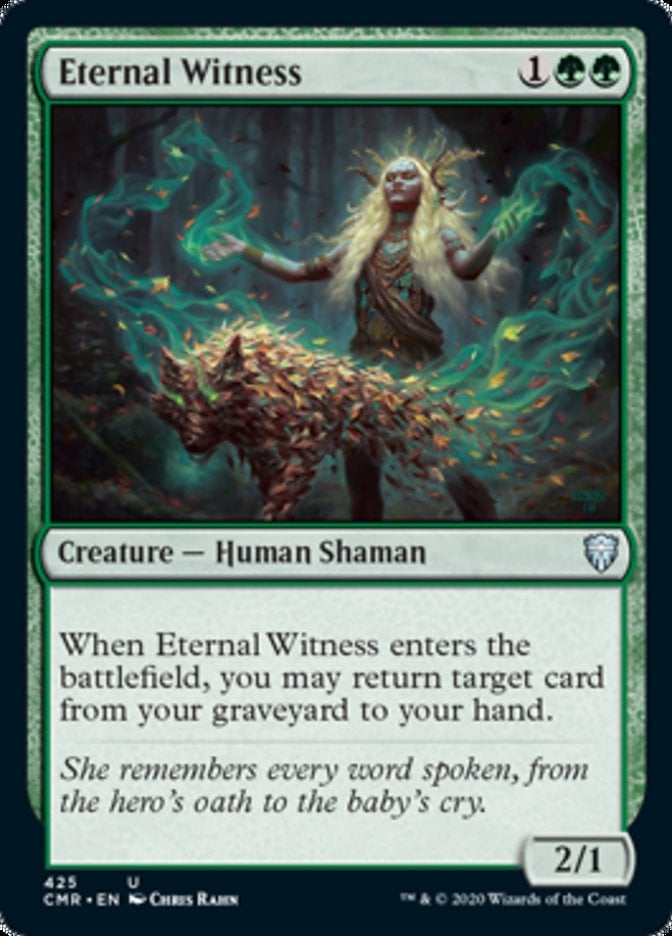
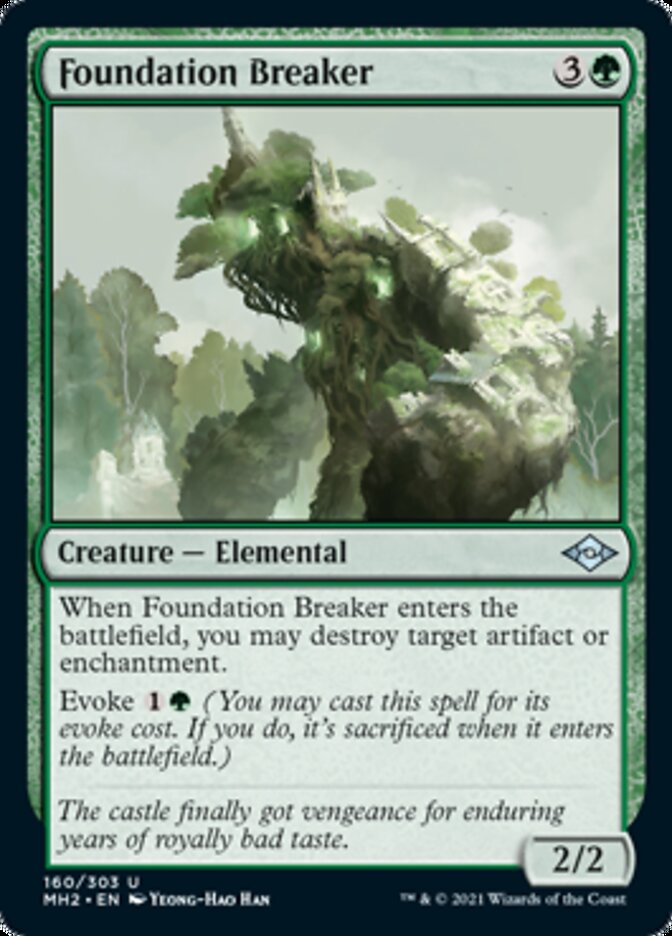
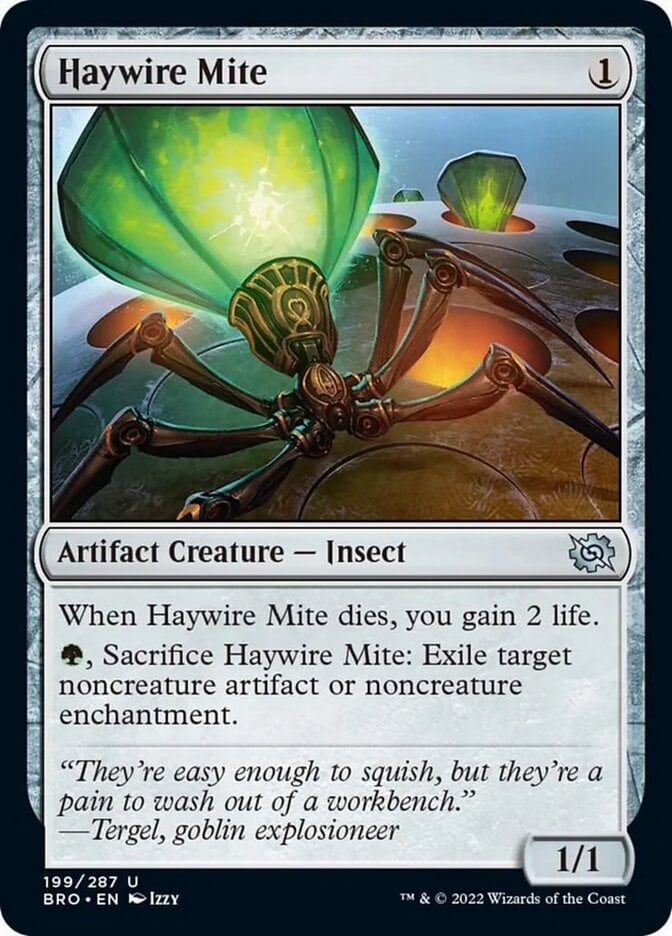
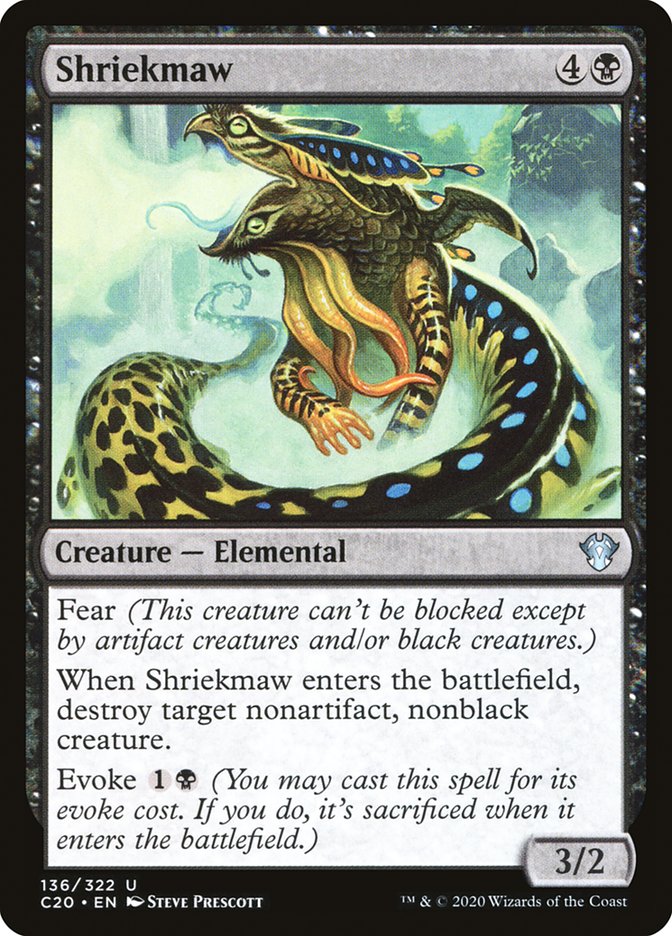
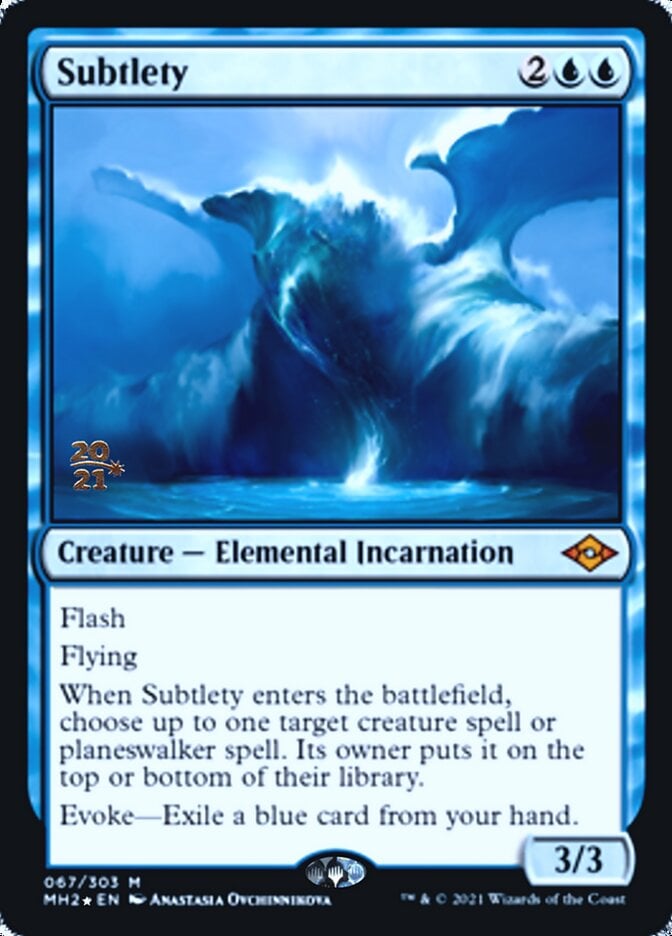
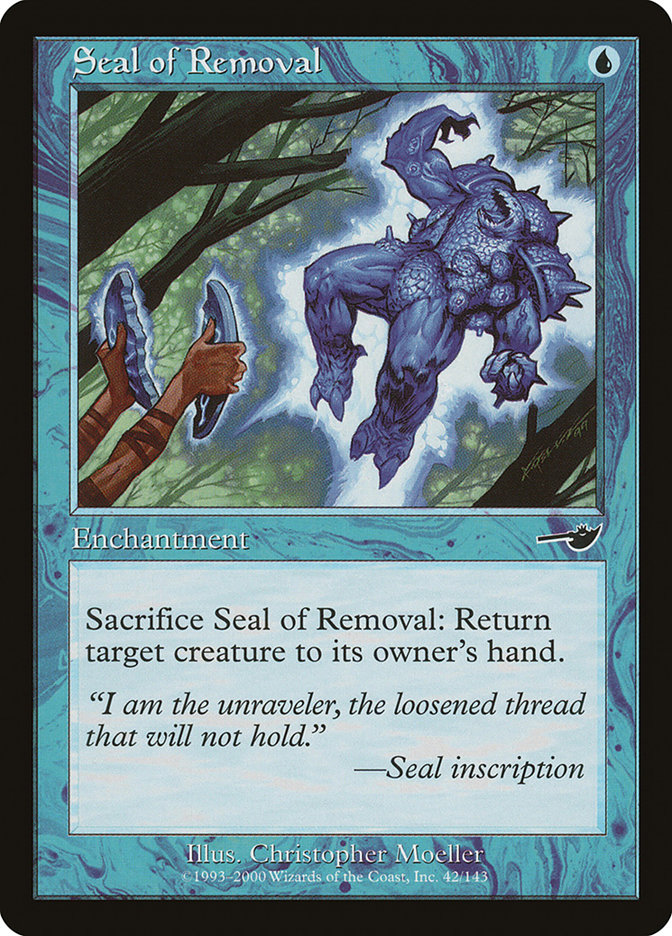
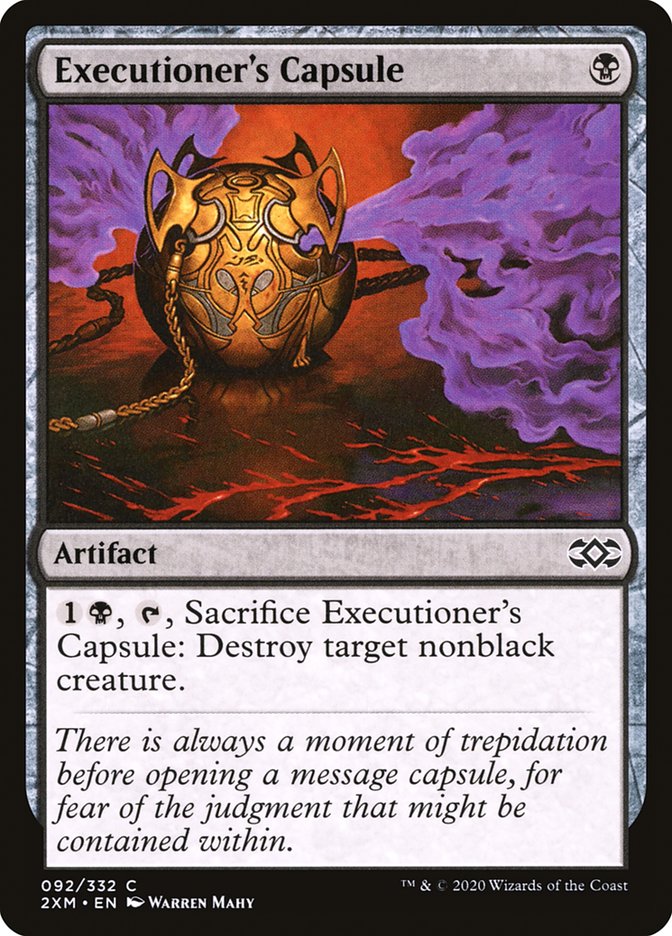

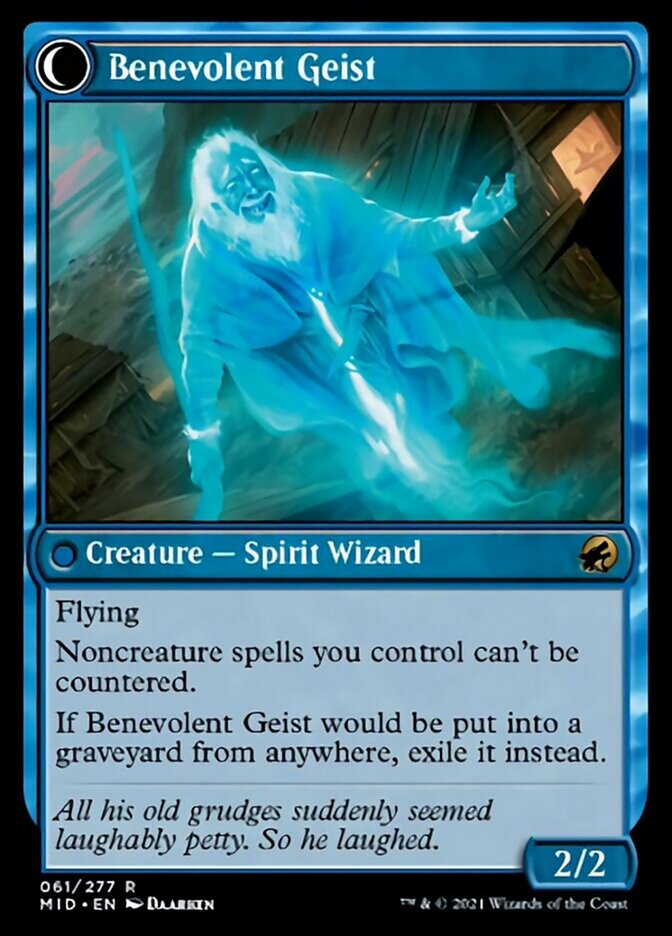
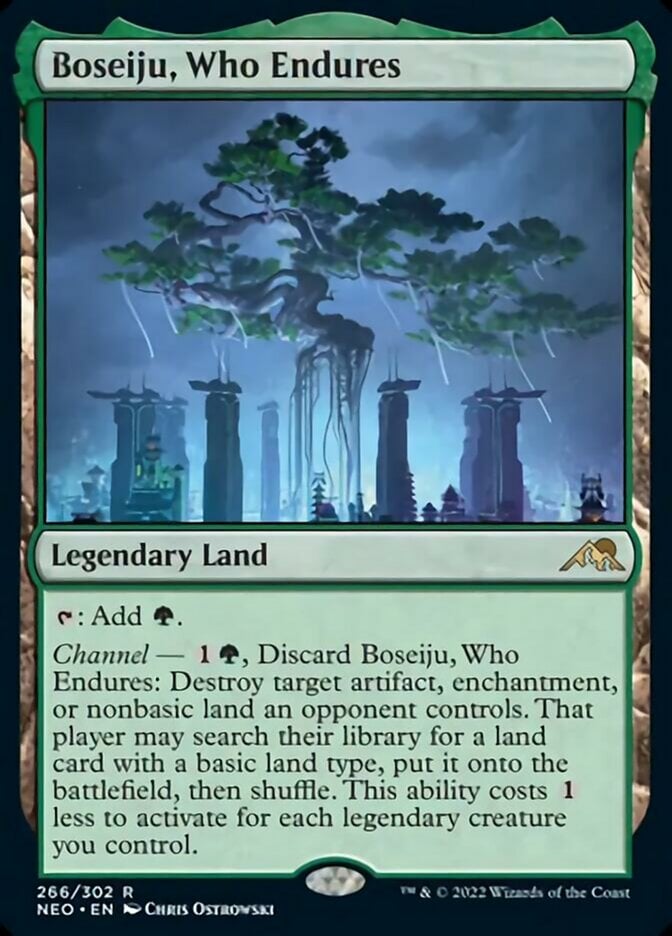
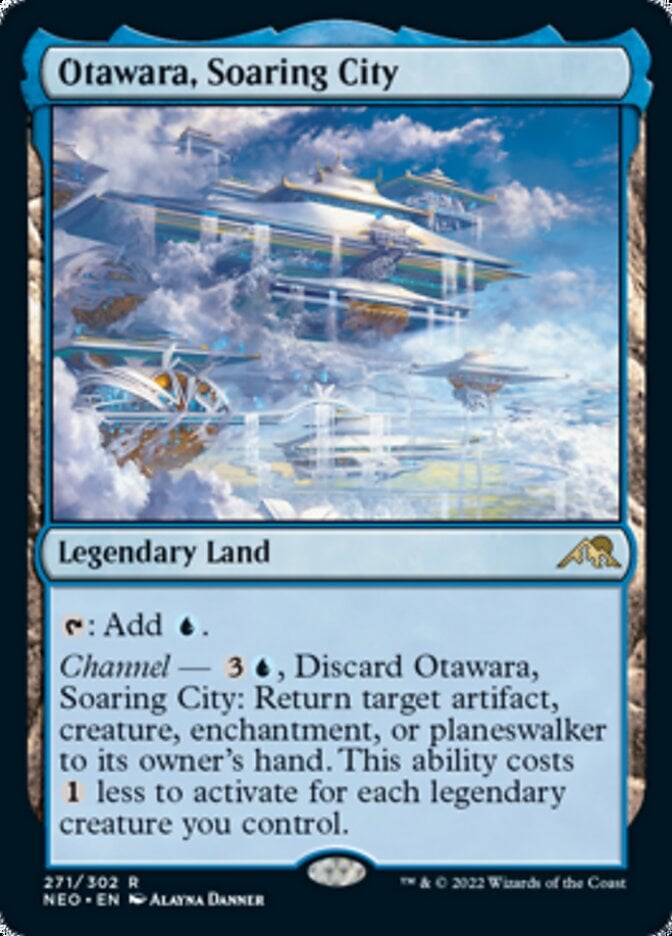
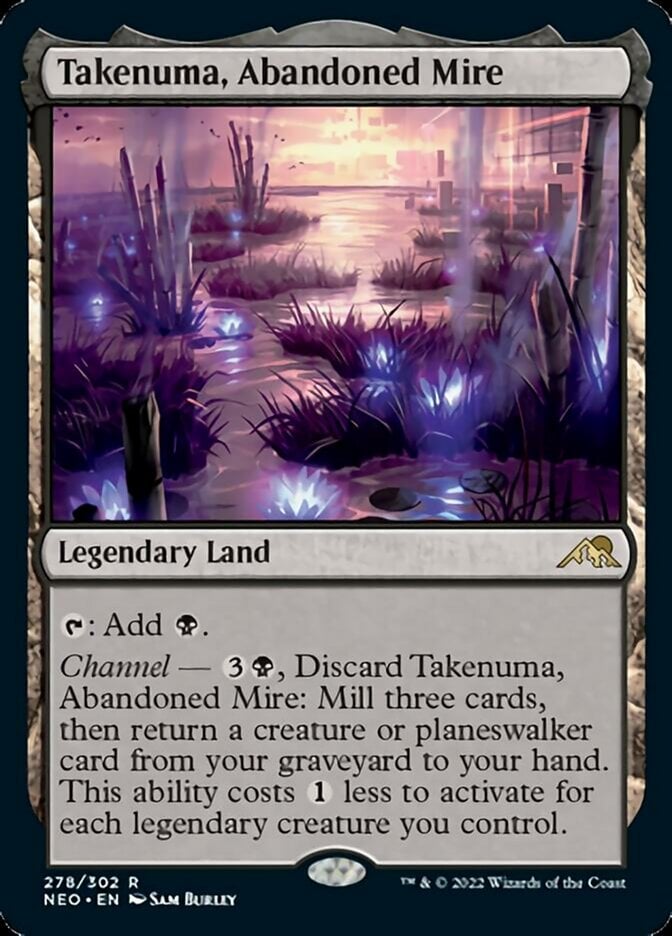

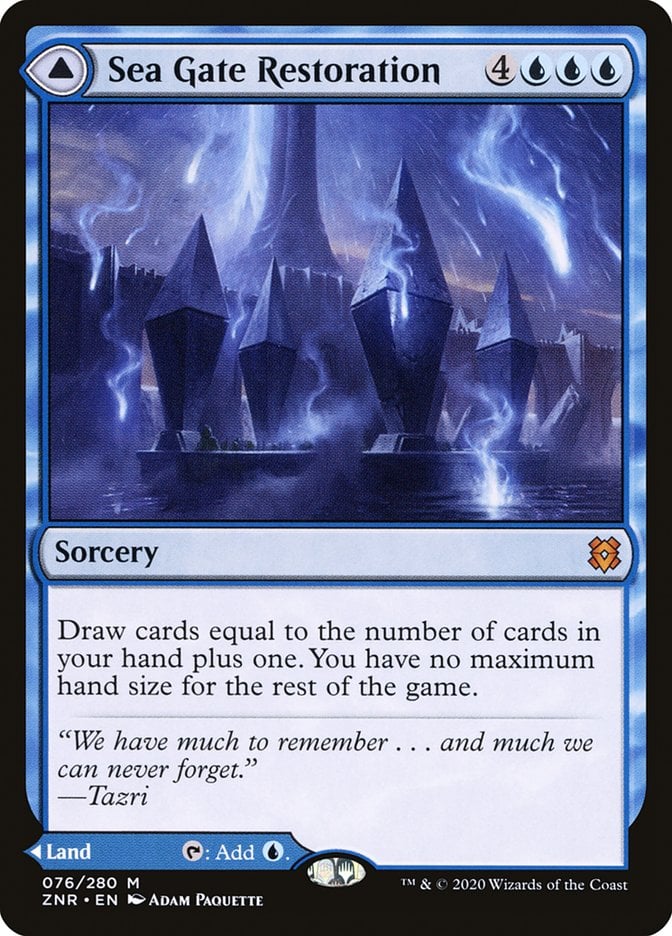
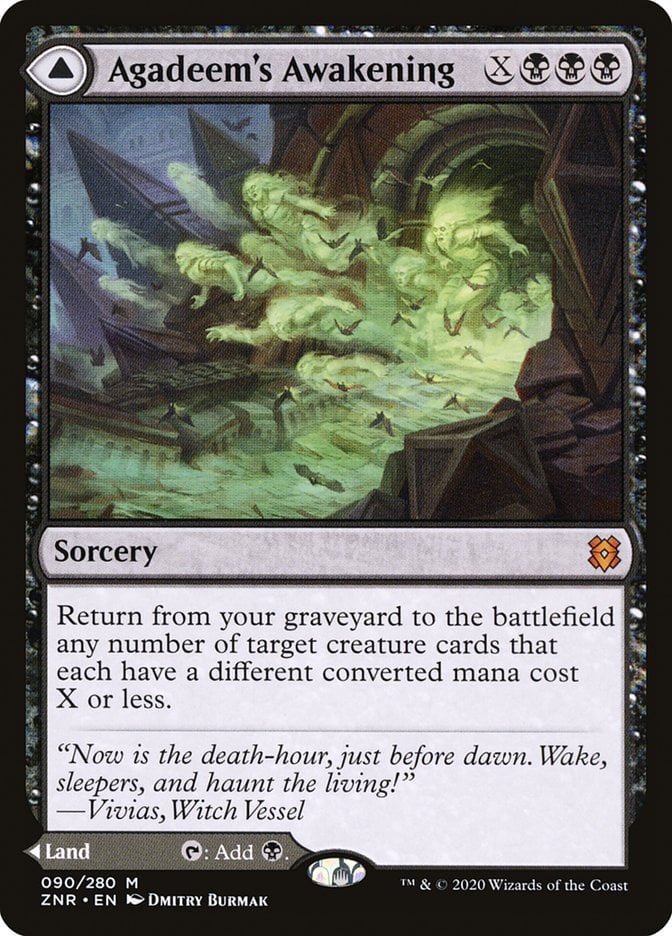

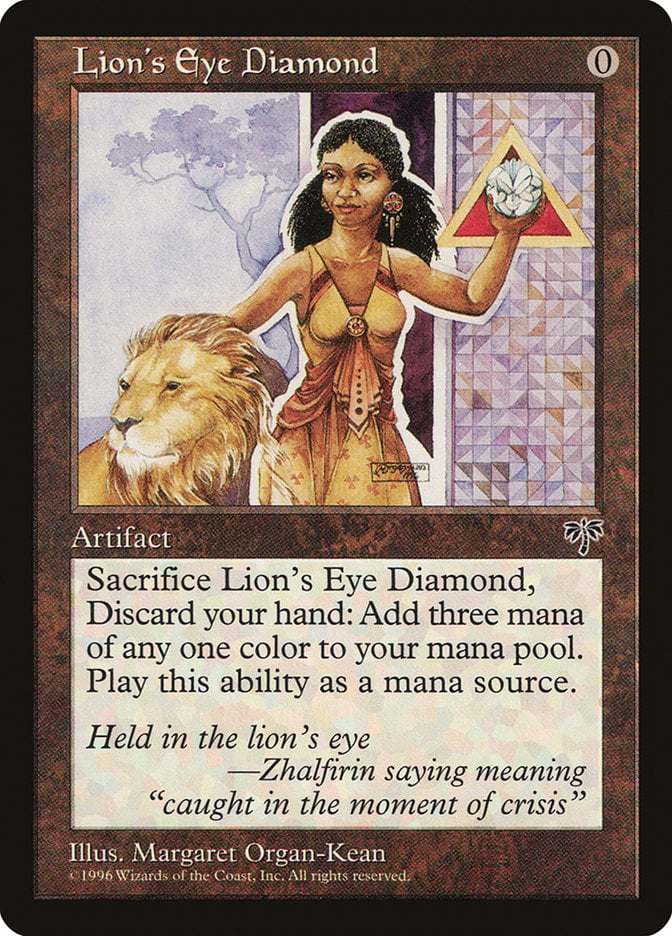
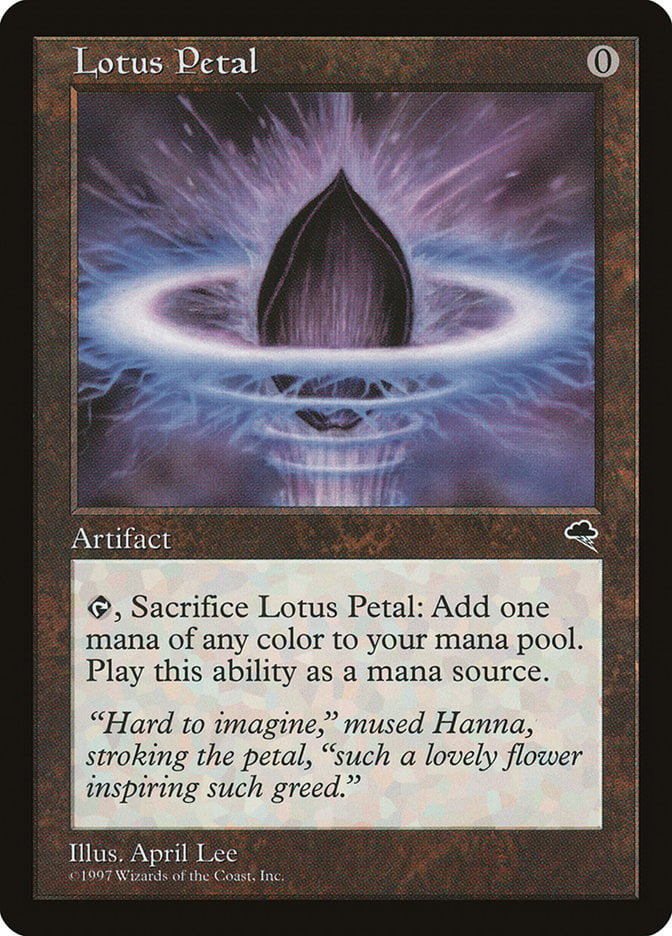
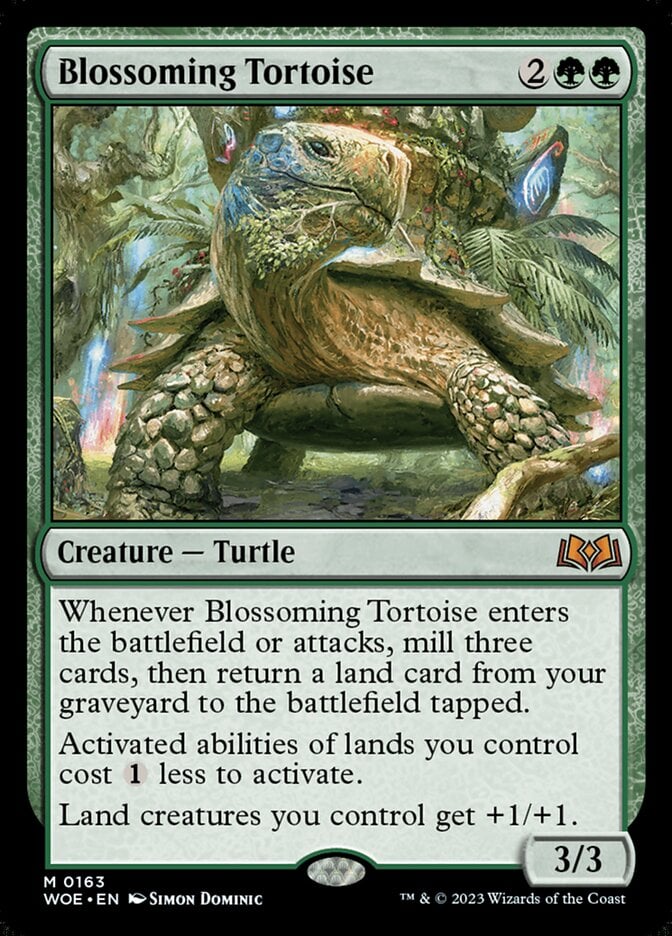
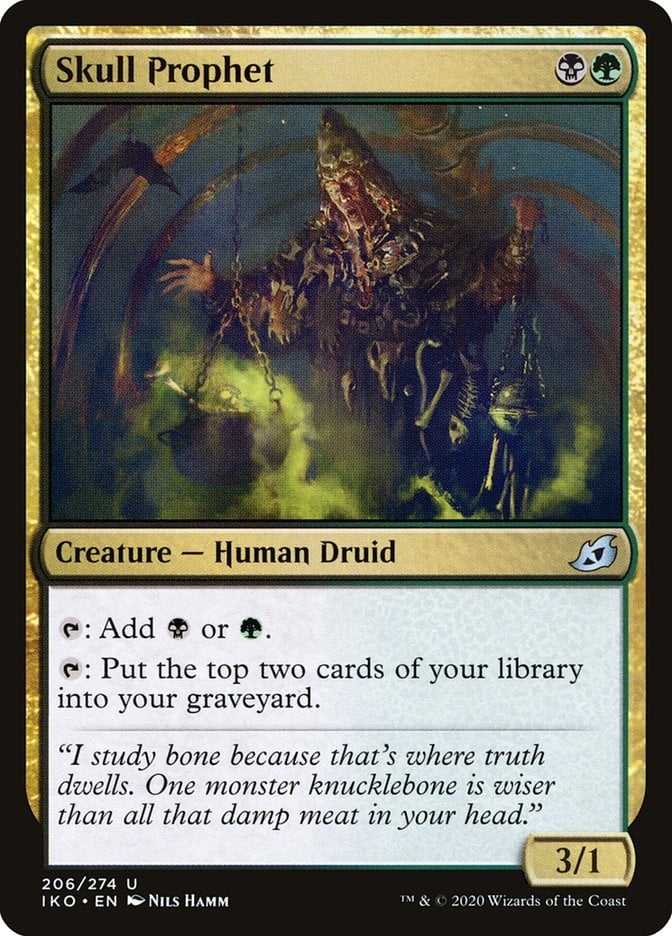

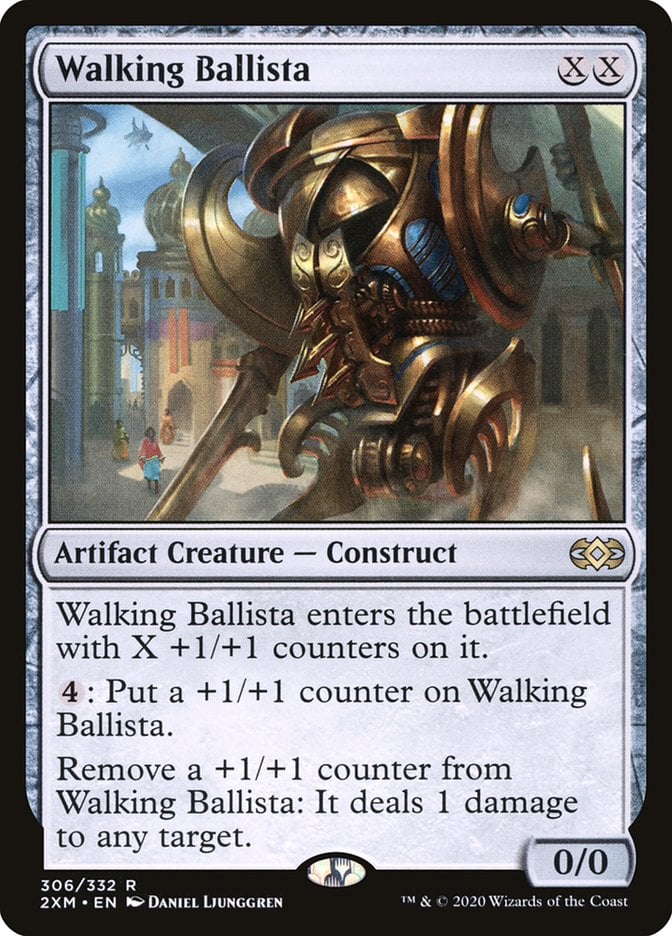
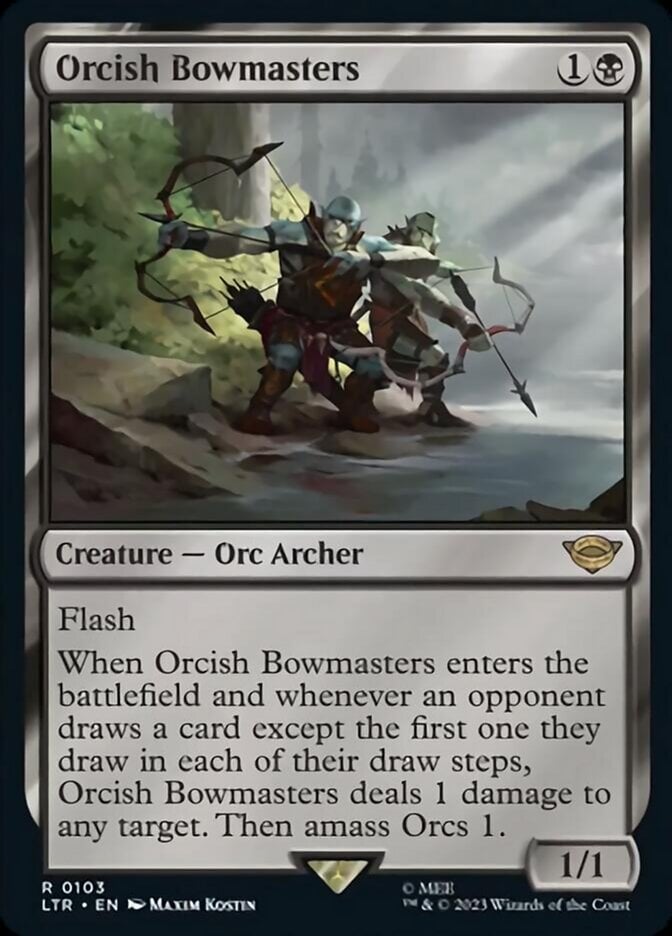
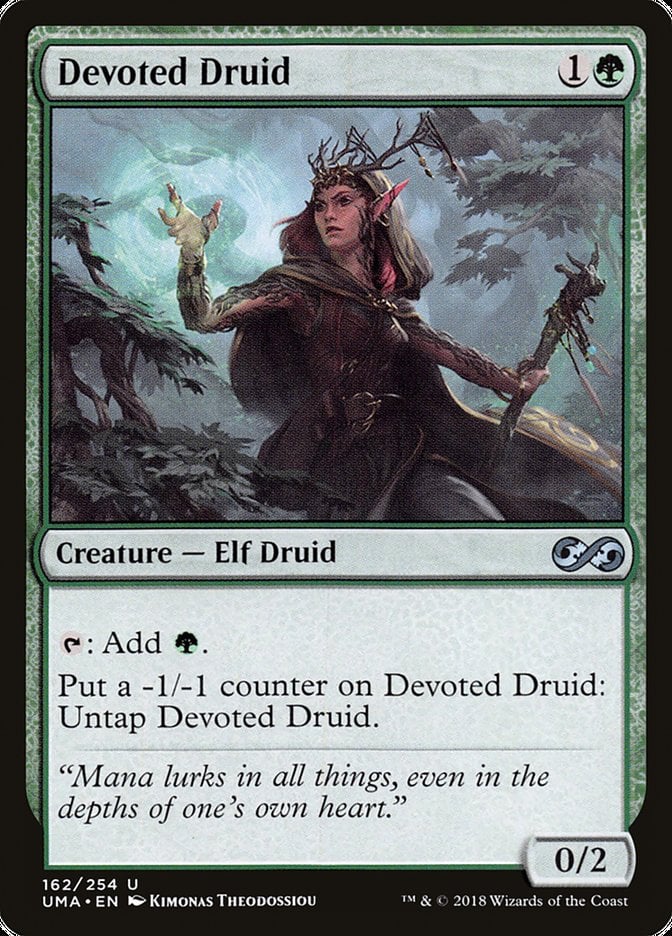
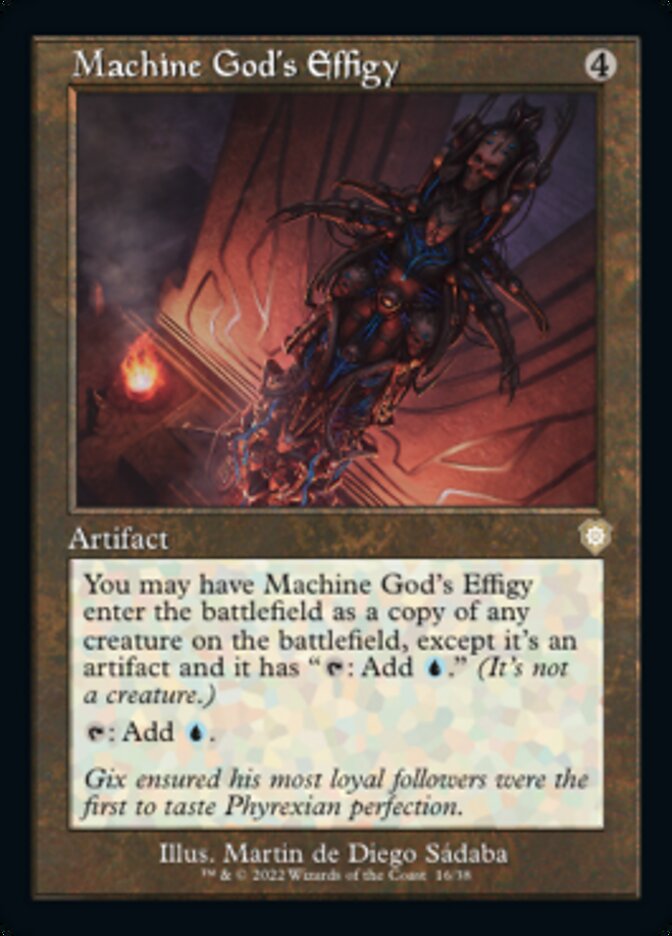
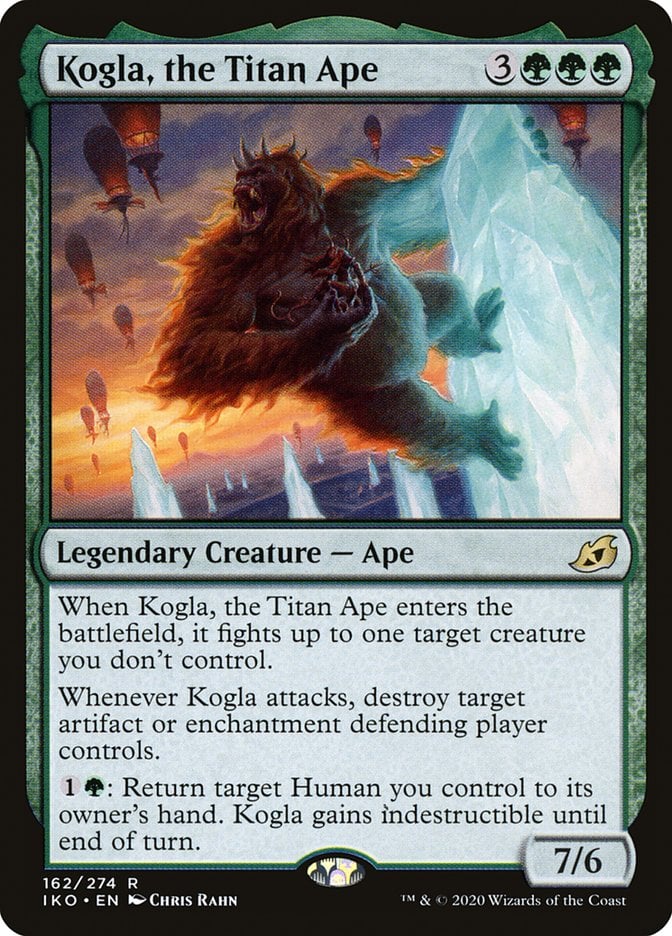
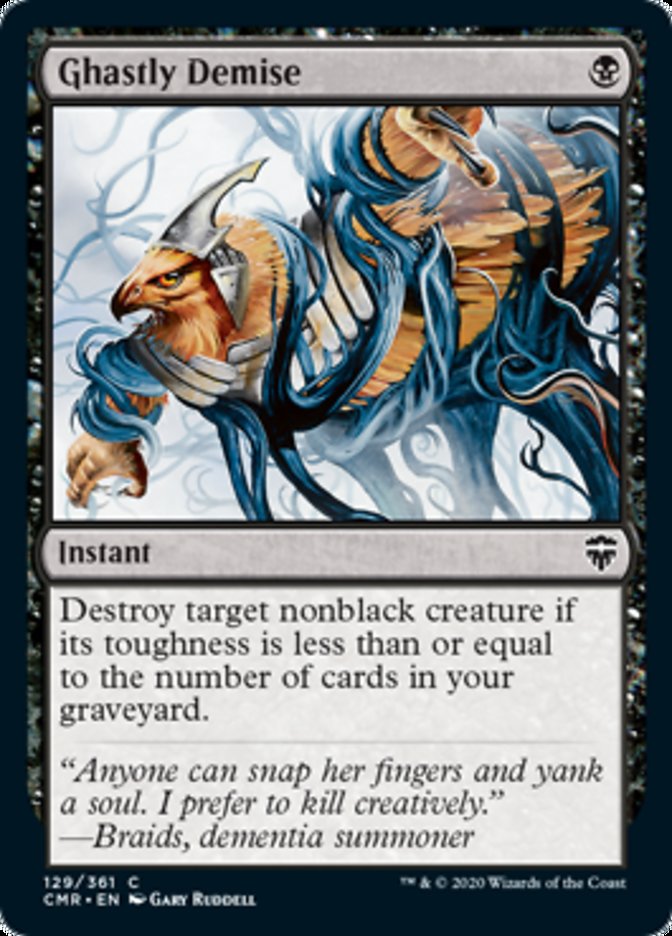

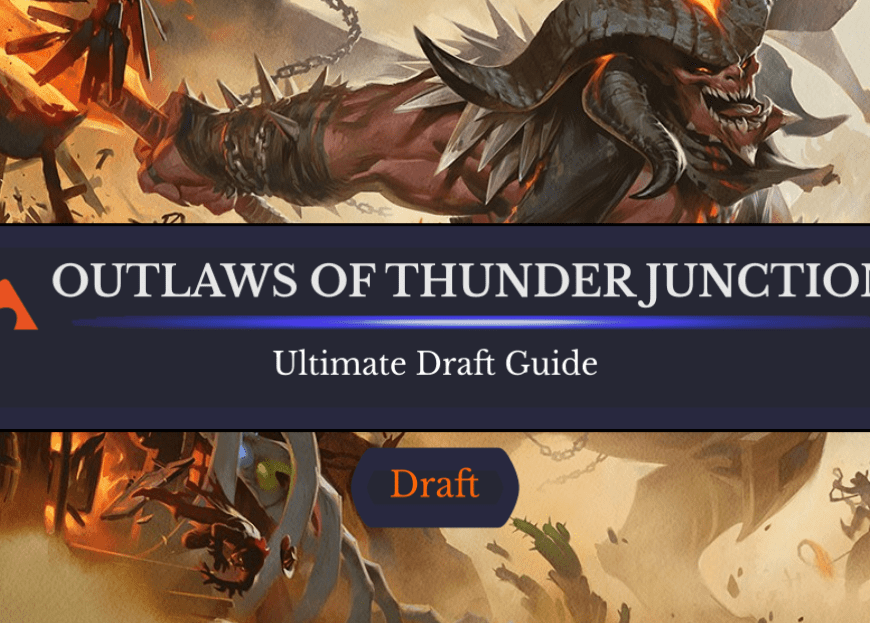
Add Comment